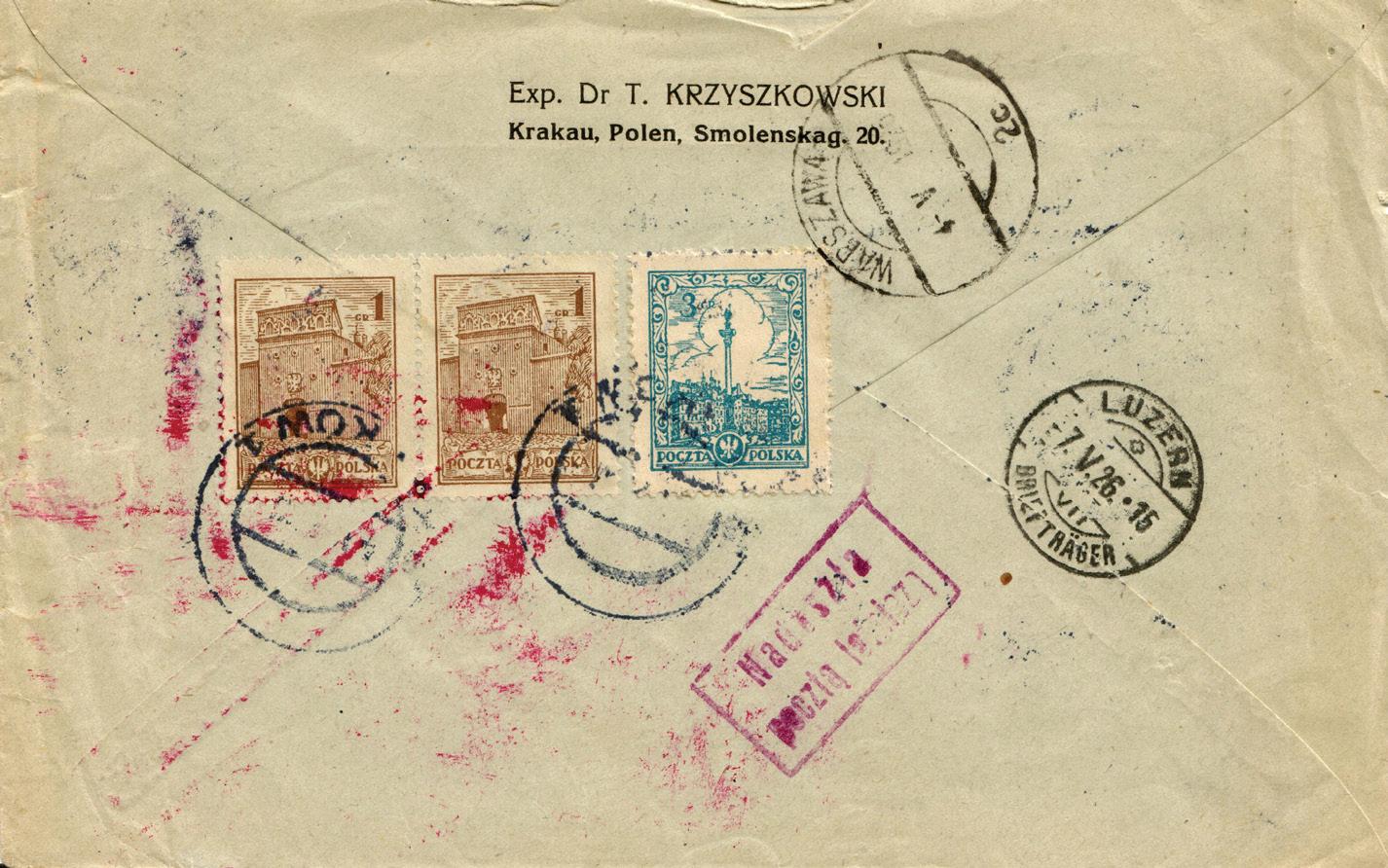
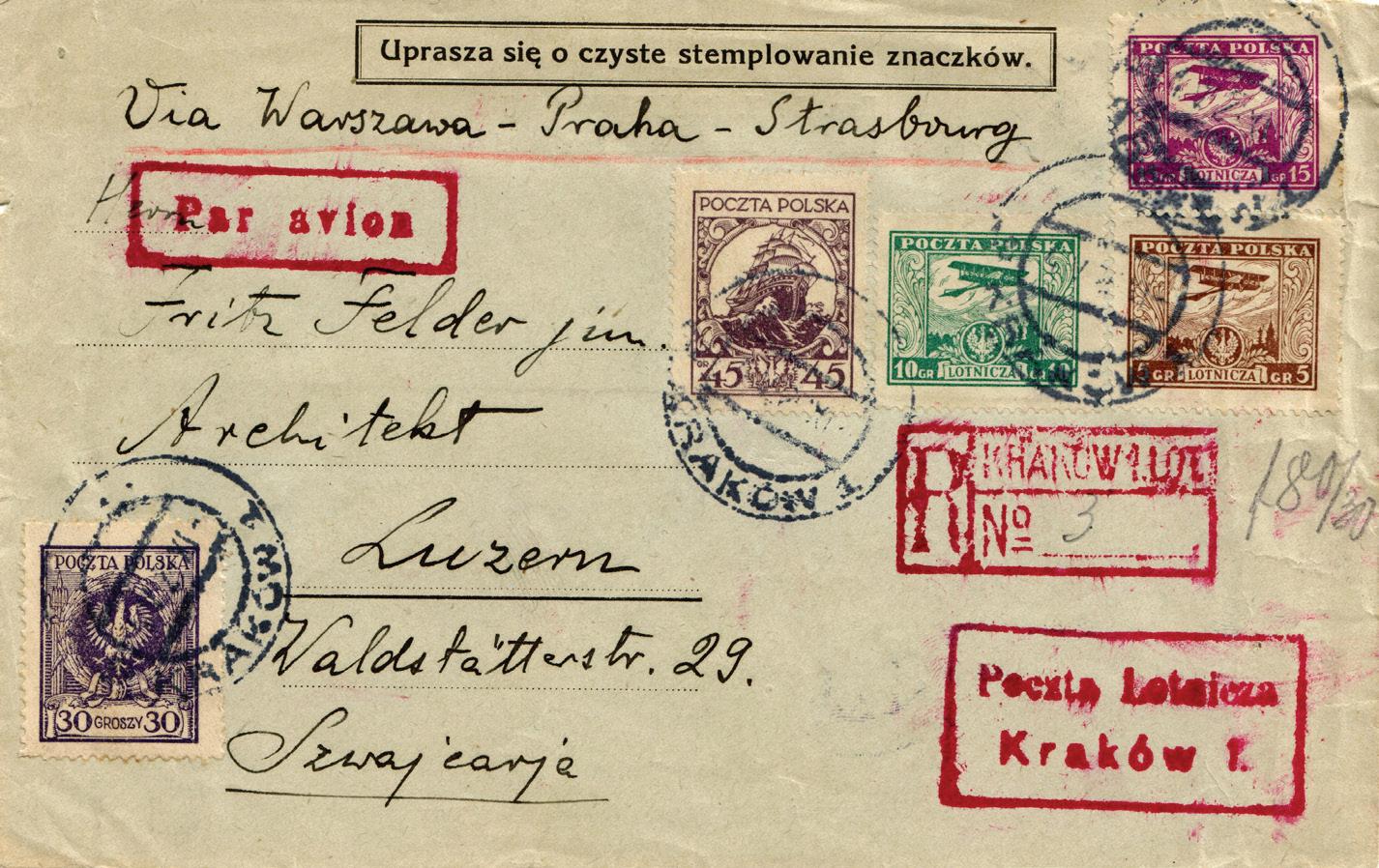
The Development of Airmail Services between Poland and Switzerland Volume 101 Number 2 $10 March/April 2022 | Essential Elements • Establishment of Poland-Switzerland Airmail • 1919 Bialystock Polish Post Collectors Club Philatelist CCP22.marchapr.indd 1 3/11/2022 11:00:21 AM
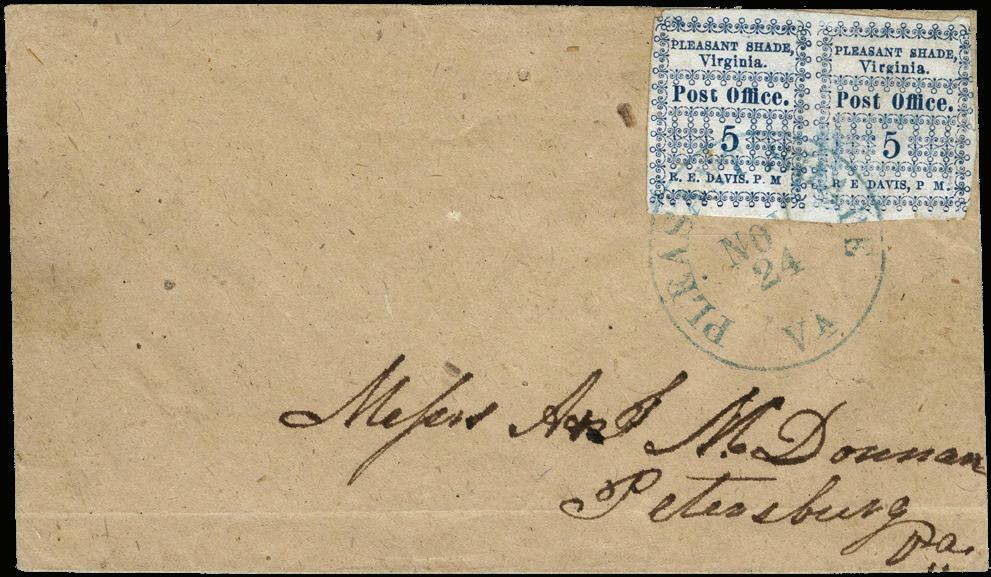

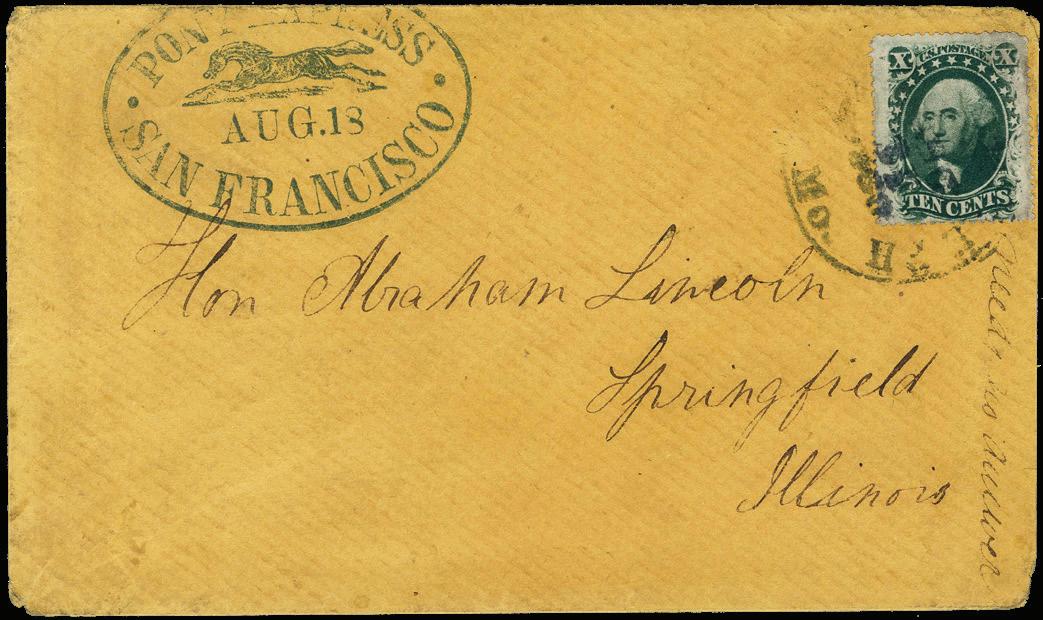
45 Rockefeller Plaza 630 Fifth Avenue · Suite 2607 New York, New York · 10111 www.hrharmer.com +1 (929) 436-2800 info@hrharmer.com New Haven, Connecticut 5c Blue on Buff Provisional Envelope Hammer Price: $85,000 Pony Express Cover to the Honorable Abraham Lincoln Hammer Price: $280,000 Pleasant Shade, Virginia 5c Provisional Pair on Cover Hammer Price: $75,000 Highlights from the “Erivan” Collection Part VI H.R. Harmer’s next sale will be held June 21-23, 2022. If you are interested in consigning please contact us today. CCP22.marchapr.indd 2 3/11/2022 11:00:21 AM
Editor: Wayne L. Youngblood wystamps@gmail.com
Layout and Design: Jason E. Youngblood jyoungblood@gmail.com
Publications Committee” John Barwis, RDP Robert Gray James Grimwood-Taylor, RDP Matthew Healey Daniel M. Knowles, MD Robert P. Odenweller, RDP (member emeritus)
Advertising Manager: Robert Gray robertgray@me.com
Book Review Editor: Dr. Luca Lavagnino, Europe
Editorial Correspondence: wystamps@gmail.com
Business Correspondence: 22 E 35th St New York NY 10016-3806 Tel. (212) 683-0559 Fax (212) 481-1269 email: info@collectorsclub.org
website: www.collectorsclub.org
Librarian: Andrea Matura readingroom@collectorsclub.org
Authors’ Guidelines for the CCP are available from the editor.
The Collectors Club Philatelist
Essential Elements (featuring items of interest) by Bob Coradi 70 by John M. Hotchner 72
The Development of Airmail Services between Poland and Switzerland by Dr. Jerzy W. Kupiec-Weglinski, FRPSL and George Struble 76
If You Haven’t Discovered Yet: Danish Postal History 1875-1907 Has an Extensive International Usability by Jonas Hällström RDP FRPSL 106
The Beginnings of the Polish Post in Białystok in 1919 by Dr. James Mazepa, RDP 114
Departments
Programs ................................................................................................. ..65
President’s Message............................................................................ ..67
Editor’s Notepad .................................................................................... ..73
Collectors Club Annual Membership Report .............................. 124
Membership ............................................................................................ 126 Index to Advertisers ............................................................................ 128
All Collectors Club meetings currently are held online, via ZOOM, and begin at 5:30 p.m. (Eastern). Although there is no cost, pre-registration is necessary.
Collectors Club Programs 2022
Mar. 23 Treasures of the Spellman Museum Yamil Kouri Lexington, Mass.
April 6 Civil War Philatelic Society, Mike O’Reilly, Dan Knowles
April 13 From TRANSFORMA To the Modern Era; The Postal History of the British Postal Automation, Steve McGill, Highlands Ranch, Colo. April 20 U.S. Nondenominated Stamps “A” through “H” Anthony Dewey, Hartford, Conn.
April 27 The British Penny Post Alan Holyoake, Jersey, Channel Islands, U.K.
May 4 Alfred F. Lichtenstein Memorial Award Banquet/Presentation John Barwis (2020), Mark Banchik (2021), Patrick Maselis (2021), Christopher Harman (2022) More Details as they become available, www.collectorsclub.org
The Collectors Club Philatelist (ISSN 0010-0838) is published bimonthly in January, March, May, July, September and November by The Collectors Club, 22 East 35th St, New York NY 10016–3806. A subscription to The Collectors Club Philatelist is included with dues paid by members of The Collectors Club. Subscription price for nonmembers in the United States is $70. Prices for foreign addresses and/or other classes of mail are higher depending on actual cost; consult publisher. Subscriptions for outside the United States should be paid in U.S. funds drawn on a U.S. bank. Back issues $9, including postage. For a complete list, write the publisher. Claims for undelivered issues will be honored only within six months of the date of publication. Beyond that, replacements will be provided at the single copy price. Periodicals class postage paid at New York, New York 10001 and additional offices. Office of Publication: The Collectors Club, 22 East 35th St, New York NY 10016–3806. Copyright@ 2022 by The Collectors Club. All rights reserved. We do not give implied or other consent for copying for more than personal use. Indexed in PhiLindx by E.E. Fricks and included in the article index of the American Philatelic Research Library and the Global Philatelic Library. The opinions and statements contained in the articles are those of the authors and not necessarily those of The Collectors Club, its officers or staff.
POSTMASTER: Send change of address to: The Collectors Club Philatelist, 22 East 35th St, New York NY 10016–3806.
65 Volume 101, Number 2 Collectors Club Philatelist
2022 Volume 101, Number 2
March-April
CCP22.marchapr.indd 65 3/11/2022 11:00:21 AM
THE COLLECTORS CLUB
22 East 35th Street, New York, NY 10016 (212) 683-0559
The Collectors Club is in the process of reopening, currently by appointment. Please check www.collectorsclub.org for updates and resources, call (212) 683-0559 or send email to info@collectorsclub.org

President
Lawrence Haber Vice President
Robert Gray Secretary Matthew Healey Treasurer Roger S. Brody, RDP Chief Technology Officer Joan Harmer
Class of 2022
Robert Gray Lawrence Haber Matthew Healey Daniel J. Ryterband Wade E. Saadi, RDP
Officers Governors
Class of 2023
Roger S. Brody, RDP Vincent Cosenza Joan Harmer Kathryn Johnson
Class of 2024
Ozan Gurel Mark E. Banchik Lawrence J. Hunt Stephen Reinhard Robert G. Rose
The Collectors Club Philatelist is an international specialty journal serving the needs of hundreds of collectors worldwide. It serves as the journal of record for the CCNY as well as publishing stimulating and helpful articles for collectors of many levels and specialties. The Collectors Club Philatelist strives to publish accurate philatelic information and serves as a forum for communication among members of The Collectors Club.
www.collectorsclub.org March-April 2022
66
CCP22.marchapr.indd 66 3/11/2022 11:00:22 AM
President’s Message
By Lawrence Haber
Several Updates
My letter in this issue of the Collectors Club Philatelist may seem a touch disjointed, but there has been a great amount of activity going on related to the management of the Club. I want to drop back a bit and provide you with some insights. Better disjointed than not keeping the membership in some important loops.
Irene Bromberg
We were all shocked and saddened by the passing of our club’s longtime executive assistant, Irene Bromberg, on March 1. Besides being the engine who kept our organization humming along, Irene was – for many members – the face at the door and the voice on the phone anytime they contacted the Club. It goes without saying that Irene will be deeply missed, and a proper remembrance will follow in our next issue

Real Estate
As matters stand at this moment, we have a prospective buyer for 22 East 35th Street. The buyer, being a sovereign entity, sees the proximity to United Nations Plaza as an advantage. After a few back-and-forth exchanges, the matter was brought to the Board of Governors, which authorized the sale of the building. This is a vital first step as we proceed towards moving the Club to its new home. We hope to have a signed contract in a matter of days.
You’ll recall our discussion of air rights, otherwise known as unused developmental rights? We (finally) received a credible offer from our next-door neighbor, the Community Church, and we are actively negotiating price and terms.
In the midst of all this sales activity, we have been busy looking for our new home.
We have undertaken a great deal of work with an architect and other professionals to evaluate our space and fit our needs. As anticipated, there is no lack of appropriate space in midtown Manhattan. We have an excellent handle on our requirements for a new home. This has been derived from both an analysis of our current space utilization and by our vision for the future. At the most basic level, we need around 4,500 square feet. But, in New York City, you do not lease “usable” space, you lease “rentable” space. Rentable space is marked up by around 27% above that which you actually use. Fortunately, we are very well advised. We are absolutely committed to staying within the area marked by Penn Station in the south, Grand Central Terminal to the north, between Lexington and 7th Avenues. There are a number of potentials, some of which we have toured several times, and we remain convinced that we can do very well. As many of you might imagine, today is a good time to discuss commercial real estate leases in Manhattan. Promises have been made that we
67
Volume 101, Number 2 Collectors Club Philatelist
CCP22.marchapr.indd 67 3/11/2022 11:00:22 AM
can transition ourselves to a wonderful new location. There is no reason to back off from that commitment.
Dates
We all want to come back to the clubhouse. We are sick and tired of canceling and putting off Club events. Yes, everyone seems to agree we have done well with the virtual events, but there is also a time and a need for us to meet and talk in real space. And, of course, we are going to be prudent and in full compliance with the rules in New York City.
With all that in mind, I would like to point out some upcoming events that we think you should not miss:
April 13: Our first program in the Club since March 2020, Steve McGill will speak on British Postal Automation. Yes, this program will be live streamed but we want to see you in the clubhouse.

May 4: The Lichtenstein Awards dinner, which will be held at the Harvard Club. We will be honoring John Barwis (2019), Patrick Maselis, Mark Banchik (2020) and Chris Harman (2021). Invitations will go out six weeks in advance, but I urge you to attend this event and mark your calendar now.
Aug. 24: Our joint dinner with Boston 2026 will take place at the Great American Stamp Show in Sacramento, Calif. This will occur on the Wednesday prior to the opening of the show. Our dinner at GASS 2021 in Rosemont, Ill., was a huge success, and you will not want to miss this.
Nov. 9: Our single-frame exhibit competition. This will be the last time our SFE competition will be held at 22 East 35th. Let us make this a competition never to be forgotten. That would be the best way to honor our clubhouse’s traditions. If you do not have a single-frame exhibit, then now is the time to start. It is my hope that we will have to go on bended knee to our friends at Nojex to borrow some extra frames.
68 www.collectorsclub.org March-April
2022
CCP22.marchapr.indd 68 3/11/2022 11:00:22 AM
Stanley Piller
I think I read an obituary for Stanley Piller in almost every philatelic journal I get, including our own Collectors Club Philatelist. There is not much I can add to his life story.

Despite all the tributes and kind words, the reality still remains: I miss Stanley.
I was at the Sarasota show and there was an emptiness. Don’t get me wrong; the people in Sarasota did a wonderful job, as they always do, with the show, but I still missed Stanley. No show will be the same for me without the chance to come to his booth, sit and talk. He’d ask if I would like to take a look and out would come the bundles bound in heavy rubber bands. For those shows I did not attend, I could expect a call from Stanley telling me about something he found. He would race ahead with his description with such a New-York-minute pace that I could barely keep up with him. Most times, I just blindly said “yes.” I figured he had a gold Rolex to feed and who am I to say “no?”

The other day, I finally got to unpack the case that I used to carry my exhibit to Chicagopex. Inside was a small bag with the covers I bought at that show, back in November. I had forgotten about them. Inside were a few covers I bought from Stanley and one in particular caught my eye. That item, still in its cover sleeve from Stanley, is shown nearby. You will note the marked price; $400 for a U.S. Scott 357, a U.S. 1¢ WashingtonFranklin blue paper on cover. For the life of me, I don’t know why I bought it. We all agree it’s a ridiculous price. That’s Stanley. Gold Rolexes don’t come cheap and neither do Stanley’s covers. But, I’m not unhappy.
Back at Sarasota, I was looking at my exhibit and I remembered that I bought this item from Stanley, and I bought that item from Stanley. So many good pieces came from Stanley. I know that though I miss Stanley there is a little bit of him up in the frames and in my albums and it reminds me of why I loved him.
Rest in peace, my friend.

69 Volume 101, Number 2 Collectors Club Philatelist 15, rue du Jeu-de-l’Arc 1207 Geneva, Switzerland ◆ info@letimbreclassique.com ◆ www.letimbreclassique.com We
collections Anders Thorell 011 41 78 717 82 94 Gaël Caron 011 41 79 102 43 21 Geneva O ice 011 41 22 760 11 11 Next Auction : Geneva, May 25, 2022
travel the whole US for important
Invite a another collector to the next online event of the Collectors Club. You never know who may be the next Alfred Lichtenstein! CCP22.marchapr.indd 69 3/11/2022 11:00:23 AM
Essential Elements
This month we continue featuring member-submitted short features that spotlight favorite items from member collections. The criteria by which you choose these items is immaterial. It could be rare, an original discovery, a keystone to an exhibit, an early item from your collection or some philatelic object that simply amuses you.

The goal of this feature is to simply highlight short, interesting editorial nuggets that allow our members to share “special” items and get to know each other and their interests a little bit better. We continue this month with contributions by Bob Coradi and John Hotchner.
Response so far has been great. We’ve received several submissions, and response to those published in the last two issues has been overwhelmingly positive! Please consider submitting an occasional item for this ongoing feature.
Postal Baseball Card
by Bob Coradi
I began acquiring baseball advertising covers about 20 years ago, as I had an interest in blending my interest in baseball with philatelic ephemera. Over the years, I have found covers in this category promoting equipment wholesalers/ retailers, periodicals, town events and sponsored teams and minor and major league team cornercards with varying degrees of imagery. About six years ago, I acquired this Babe Ruth postal card (No. UY7m) privately, having not seen it previously.
Not quite a Babe Ruth Baseball card, but …
My initial intention was to submit it to PSA (PSA is a leading sport card grading and authentication firm) for expertization as a “baseball card” of sorts.
70 www.collectorsclub.org March-April 2022
CCP22.marchapr.indd 70 3/11/2022 11:00:23 AM
PSA does authenticate and grade postcards with a baseball theme, so I felt maybe it would consider evaluating this Babe Ruth postal card. No such luck – I sent PSA a scan and its response indicated only that the company does “not have the ability to authenticate the card.” My guess is that if the card had been produced in its entirety prior to sale to the public, as is the case with a regular postcard, rather than having first been produced by the U.S. Post Office Department and, later, by a contracted print shop with the front and back advertising theme, PSA may have been willing to review the card.
My concern with this card was that it would be difficult to prove it was not an out-of-period add-on advertising theme, although I thought that scenario was highly unlikely given the printing and the apparent overall patina of the card and its subject matter. I then contacted the Philatelic Foundation and it advised that an opinion could be rendered that would indicate the card is either a genuine “of the period” advertising use or, rather, a used postal card with an add-on advertising theme concocted at a later date. Fortunately, the PF certificate came through clean and, while I cannot say this is a new Babe Ruth baseball card discovery, it nevertheless occupies a prominent place in my baseball-themed philatelic ephemera collection.

71 Volume 101, Number 2 Collectors Club
Philatelist
Invite another collector to come to the next online or in-person Collectors Club meeting! CCP22.marchapr.indd 71 3/11/2022 11:00:23 AM
Figure 1.
Another Half-Penny Cover
by John M. Hotchner
Inspired by Larry Haber’s short feature, “Half-Penny Cover,” on page 326 of the Nov.-Dec. 2021 issue of the CCP, this follow-up features in Figure 1 my own favorite half-penny cover.
During World War II, the domestic air mail rate was 6¢. If paid by a Prexy series stamp, it would be the 6¢ John Quincy Adams, as shown in Figure 2. But the ½¢ Benjamin Franklin was similar in color, and rarely was used in error in place of the 6¢.

It is not known whether the Figure 1 use was intentional on the part of the sender, hoping the U.S. Post Office Department wouldn’t notice. Or, perhaps, the
Figure 2.

72 www.collectorsclub.org March-April 2022
CCP22.marchapr.indd 72 3/11/2022 11:00:23 AM
Figure31.
sender just reached for a handy stamp that appeared in poor light to be what was needed. Whatever the backstory, the post office staff did not catch the misuse.
Half-cent Prexies were perfectly valid for airmail, of course. But it would have required 12 of them to pay the rate properly, as seen in Figure 3.

Editor’s Notepad
by Wayne L. Youngblood
While we’re still working out some of the final details, I’m pleased to announce that we will soon have a fully operational editorial board to help provide more of the type of content you like to read, as well as a few more regularly occurring columns on various subjects. The makep up of this group includes John Barwis, RDP; Robert Gray, James Grimwood-Taylor, RDP; Matthew Healey; and Daniel M. Knowles.
Look for more coverage of auctions, collections, exhibitions and exhibitors, non-English journals, philatelic history and news, membership and a wider range of book reviews. All this, of course, is in addition to the wonderful content you’ve come to expect in this journal. * * *
You’ll note this issue is a bit later than normal. Going forward we are working toward mitigating long delays that have been caused by inconsistent mail delivery during the pandemic, as well as printing and mailing delays caused by the ongoing paper and labor shortages.
Although we (a small fish in a very large pond), can’t hope to successfully address all of these issues, by slightly altering our deadlines and production schedules we hope to get your journal into your hands more consistently. This would mean ideally receiving it somewhere during the first week of the month named on the cover (i.e. the July-August issue arriving around July 5 or so).
73 Volume 101, Number 2 Collectors Club Philatelist
CCP22.marchapr.indd 73 3/11/2022 11:00:24 AM








► "6 in black Hamburg. in black. ▲ with New other special 378th Heinrich Köhler Auction 21 – 26 March 2022 Order the auction catalogues now ! Online catalogue with all lot descriptions and thousands of images, as well as registration for online live bidding are available on our website www.heinrich-koehler.de HIGHLIGHTS Ottoman Post in Bulgaria The “Abdulaziz” Collection Transatlantic Mail via Bremen The Friedrich Meyer Collection International Mail via Trieste The Rolf Rohlfs Collection (part II) Austria – First Issue Used in Hungary The Rolf Rohlfs Collection (part II) German Empire 1900-1945 The Dr. Heinz Jaeger Collection Bavaria from 1849 The Eliahu Weber Collection (part II) German States The ERIVAN Collection · 7th Auction AMG Post The Harold E. Peter Collection CCP22.marchapr.indd 74 3/11/2022 11:00:24 AM
Germany’s Oldest Stamp Auction House







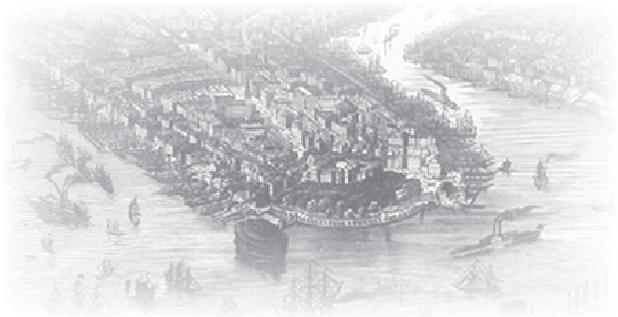
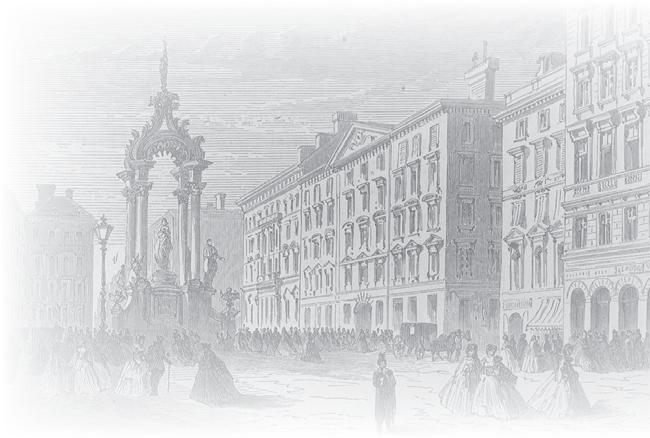





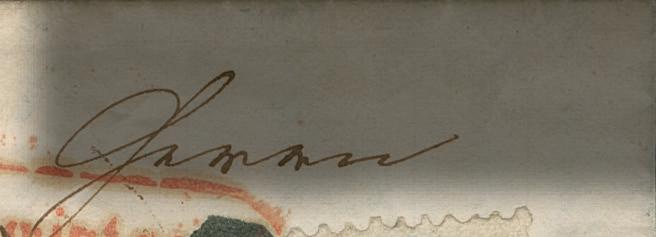
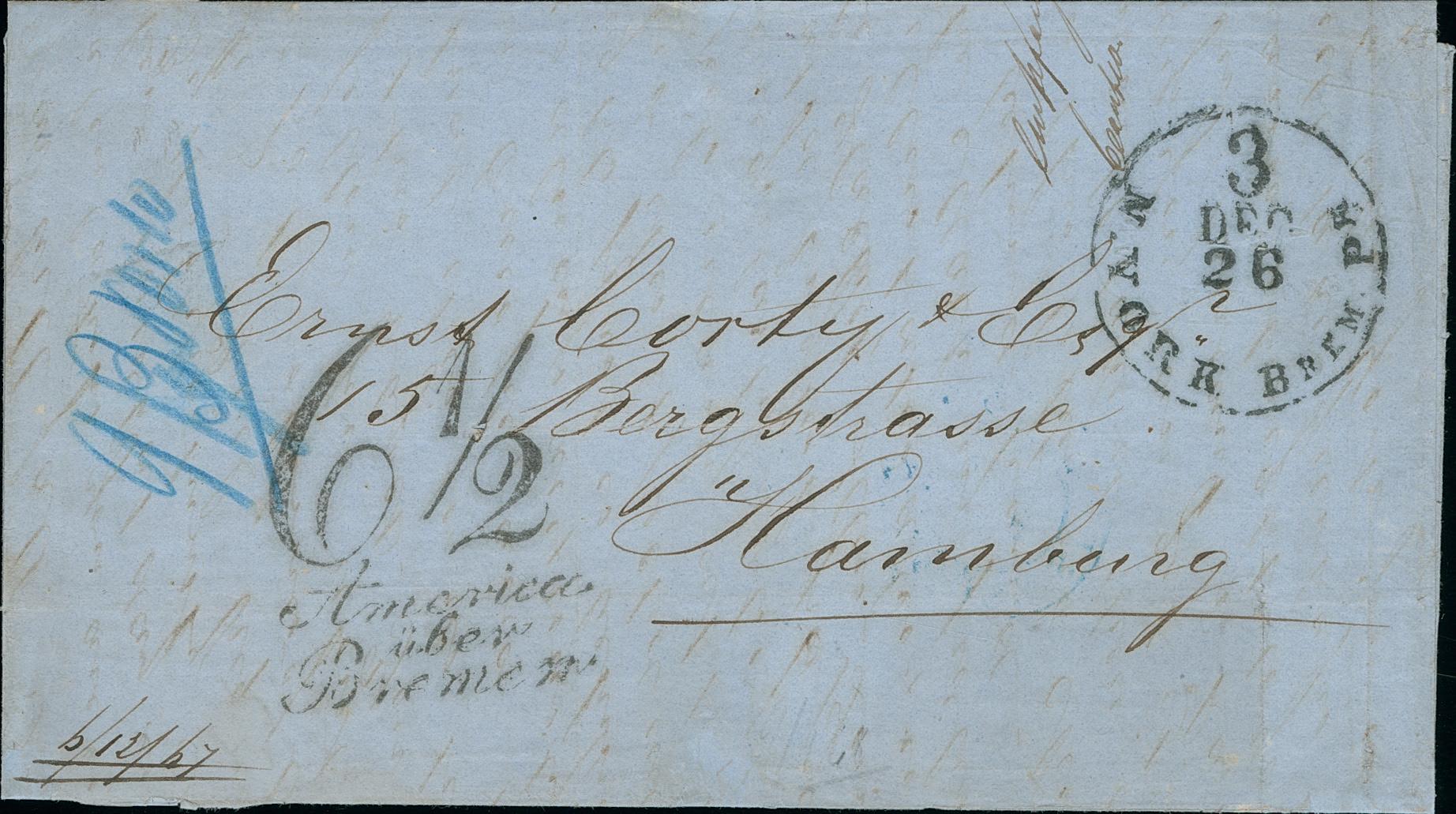





Heinrich Köhler Auctions Hasengartenstr. 25 65189 Wiesbaden, Germany
Phone +49 611 34 14 9-0 WhatsApp +49 172 666 72 45 Competence, Tradition, Quality. German and International Philately since 1913 ►
cover
◄ AUSTRIA
New
CCP22.marchapr.indd 75 3/11/2022 11:00:24 AM
www.heinrich-koehler.de info@heinrich-koehler.de
"6 ½ AMERIKA ÜBER BREMEN" in black on cover from Haiti to Hamburg. The only known usage in black. ▲ USA 1867, double rate
with 26 cents special postage from New York to Oldenburg. Only two other covers are recorded with this special rate
1866, registered cover from Vienna via Bremen to New York, impressive 3-colour franking. Vienna
York www.heinrich-koehler.de
The Development of Airmail Services Between Poland and Switzerland
(1914-39)
Dr. Jerzy W. Kupiec-Weglinski, FRPSL, and George Struble
Introduction: Poland and Switzerland, the two Central European countries some 1,000 km apart, have been sharing a rich multinational heritage throughout history. However, Poland, which is about eight times bigger and four times more populous than Switzerland, has been “God’s playground” due to its geographical location and has fought for sovereignty for most of its history. Partitioned for 123 years between neighboring Russia, Prussia and Austria, there was no independent Polish state on the world map until November 1918. Two decades later, Hitler’s invasion of Poland in September 1939 marked the beginning of World War II. In marked contrast, Switzerland enjoyed a long period of peace, stability and prosperity. Indeed, Swiss neutrality during the World Wars and the success of the banking industry furthered the ascent of Switzerland to its status as one of the world’s most stable democracies and thriving economies.
As postal history scholars, both authors have researched the development of airmail services in Poland and Switzerland for decades. With the World Stamp Helvetia-2022 Exhibition taking place this year on Swiss soil for the first time in more than 50 years, we now join forces and look closer at the Polish-Swiss airmail relations in interwar Europe (1914-39).
Airmail from the Besieged Przemysl to Switzerland (1914 – 1915)
At the outbreak of World War I in 1914, Przemysl was a garrison town of the Austro-Hungarian Empire in the Galicia Province, the territory of presentday southeast Poland. A heavily fortified Przemysl with 130,000 men, 21,000 horses and 1,000 guns was of significant strategic importance at Imperial Russia frontiers, making it a second Metz or Antwerp. Between Sept. 18 and Oct. 10, 1914, and, again, Nov. 10, 1914, through March 22, 1915, the garrison was besieged by the Russian forces and cut off from critical food and ammunition stores. In all, during the fighting around Przemysl, military losses on both sides of up to 115,000 killed, wounded and missing, made it one of the bloodiest sieges in modern military history.
After Russians severed most of the ground routes around the fortress, it became clear that the only remaining means of communication was by air. The provisional airmail effort set up by the Austrian Army in the besieged Przemysl was in response to the necessity of the defenders to communicate with the outside world, especially with the loved ones. At least 14 airplane flights, 10 paper-balloon, and four manned-balloon flights carried private mail from the garrison. It has not been widely recognized that Przemysl airmails illustrate the first time in history that mail-laden airplanes landed and took off within a surrounded fortress. Noteworthy about this airlift is that, unlike many others that followed, Przemysl airmail was not philatelically motivated.
On Dec. 9, 1914, field pilot Cpl. Johann (Hans) Wanneck of the Austrian Air Squadron No. 11 (Fliegerkompagnie 11; pilot license No. 156), accompanied
76 www.collectorsclub.org March-April 2022
CCP22.marchapr.indd 76 3/11/2022 11:00:24 AM
by observer, OLt Johann (Hans) Wagner flew a Lohner C1 airplane from the Przemysl-Hureczko airfield. This was the third mail-carrying flight of the siege (the first flight was Oct. 6, 1914; the second flight was Nov. 23, 1914). After crossing over the Carpathian Mountains in strong winds, they landed at the Széplakapáti airfield in Kaschau, Hungary (present-day Košiče, Slovak Republic) with about 5,000 cards onboard (collected in the fortress between Nov. 23 and Dec. 8). The mail was canceled at the FPO 30 (Tabori Postahivatal 30 / 914 DEC 10; in error 914 Dec 1 or 914 Dec 11) before further distribution by surface means (Vienna arrival on Dec. 13, 1914).
Figure 1 illustrates a unique postcard, written by Wanneck himself, after completing the Carpathian flight. It is addressed to his former flying instructor, H.W. Eckinger, in Dübendorf, near Zürich. On the reverse, Wanneck writes, “My Friend, Flying continues, I carried from Przemysl some 5,000 letters and cards flying over the Carpathians at 3,200 meters for 5 hours to land in Hungary. In the morning, we go back again. I believe that I have made over 15 major sorties up to now. I wish you a Merry Christmas and a lucky New Year. Yours, Hans.”

The card was endorsed “Luftpost” by the pilot, who also put his address as “K.u.K. Feldpilot, Fliegerkomp 11, Przemysl.” It shows a “Fliegerkompagnie Nr. 14” receiving cachet from Kaschau, a Dec. 11, 1914, transit FPO 30 postmark (in error, should have been 914 DEC 10) and Dübendorf receiving postmark, but no stamp. Indeed, the Swiss authorities were obliged to charge 10 Rappen (Rp) in postage due for Austrian military mail, which otherwise traveled free of charge throughout the vast Austro-Hungarian Empire.
The “Wanneck” card, initially with the Locarno-based stamp dealer, Adolphe von Arx, was acquired by Georg Sobetzky, a Vienna aerophilatelist, who then sold it in the 1930s to a British collector, John Crichton-Stuart, the 4th Marquess of Bute. The Swiss postage due 10-Rp stamp was washed off the card on the
77
Volume 101, Number 2 Collectors Club Philatelist
CCP22.marchapr.indd 77 3/11/2022 11:00:25 AM
Figure 1. Besieged Przemysl to his flying instructor in Dübendorf, Zürich (Dec. 4, 1914).
night of Sept. 24, 1940, when the Chancery Lane Safe Deposit vault was flooded during a German air raid of central London. At the same time, the Marquess’ example of the world’s most celebrated philatelic printing error, the “Inverted Jenny” (position 63), lost its gum but … remained in the family. In contrast, the “Wanneck” card with other Przemysl siege postal “treasures” was auctioned at the Robson Lowe’s Bute sale (March 25, 1959). Another Brit, Keith Tranmer, a prominent WWI postal historian, purchased many of them before ending up over 50 years later in the Polish aerophilately collection in California. So much about the most sought-after aerophilately item from the Przemysl siege era, a pioneer Carpathian flight with international fame, quite a history and provenance.
Hans Wanneck, at the age of 20, was one of the youngest aviators in the Austrian Army during WWI. After completing the Carpathian flight from besieged Przemysl in December 1914, his war-time adventures read like a movie script. On Feb. 1, 1915, he was downed by Russian ground fire, but managed to flee from the burning plane and walked some 20 miles in a blizzard towards Austrian lines before being captured by a Cossack patrol. After being detained in a POW camp in Chita, Siberia, Hans tried desperately to escape, and even crossed the Chinese border, only to be turned back to Russia. Another time, after arriving in Moscow on a hospital train, he then traveled to Odessa, pretending to be an Englishman. Here, after being shot and wounded, Wanneck was ultimately discovered by Odessa-occupying Austrian forces … just in time for redeployment in 1918 as a fighter ace at the Italian front. A co-founder of the first airline company in Austria, OLMV, and twice awarded the highest Austrian Bravery Medal, Hans Wanneck perished in an air crash on Aug. 29, 1930. This is a brilliant example of how researching a single postal item uncovers a fascinating personal story.
Just about every nationality in the Austro-Hungarian Empire was in the Przemysl fortress. Since the soldiers were Hungarian or Czech, with the Austrians serving primarily as officers, most of the correspondence was addressed to Austro-Hungary. An informal census shows that in addition to the Wanneck card, there exist six additional postal items addressed to Switzerland and carried from the fortress (five by airplane and one by a paper balloon). One of the cards (No. 8565) is known only from a black-and-white photograph published as an official postcard of the Zürich Philatelic Exhibition in May 1915. Here, we present three Switzerland-bound cards carried by a humanitarian airplane bridge from the besieged Przemysl in January-February 1915.
Figure 2 illustrates a card (1618) addressed to Genf (Geneva). Written on Feb. 8, 1915, it was flown on Feb. 10 from the Przemysl-Buszkowiczki airfield to Brzesko (Leo Libano as pilot and Benno Fiala von Fernbrugg as observer, Flight No. 10). It shows Przemysl flight cachet (Fliegerpost Przemysl/1915; Type 4), a camouflage mute marking IX/54 (Type IV, where Roman numeral “IX” was the code for Galicia and Arabic “54” for Przemysl) and double-censorship markings at regimental and official levels. Mail carried on this flight arrived in Vienna on Feb. 11-12, 1915. Although flown free of charge, a 5h (heller) Austrian stamp was attached by the sender to the card before censor intervention, most likely to assure safe passage and timely delivery. It was postmarked “Geneve 11 / Rue de Strand / 13.III.15” on arrival; this means it took another month for this card to travel from Vienna to Genf. The Swiss authorities were obliged to impose 10-Rp postage due to bring Austria’s military mail to Switzerland. Here, the postal clerk
www.collectorsclub.org March-April 2022
78
CCP22.marchapr.indd 78 3/11/2022 11:00:25 AM
accepted the Austrian 5h stamp as the correct due tax for the Vienna-Geneva transmission or let this mail pass just because he didn’t know what else to do!
However, it is highly doubtful the sender appended Austrian postage for this purpose in Przemysl, which makes this card unique.

Figure 2. This card, addressed to Geneva, was flown from Przemysl to Brzesko (Feb. 10, 1915) and then carried by surface mail to Geneva (March 13, 1915, arrival). The Swiss authorities accepted the Austrian 5h stamp as the 10-Rp postage due equivalent.

Figure 3. A card addressed to Basel was flown from the besieged Przemysl to Krakow or Brzesko (Jan. 18, 1915). A Swiss 10-Rp postage due stamp was affixed and tied by the Basel arrival cancellation (Feb. 2, 1915). (courtesy Corinphila Auction 145, April 2006, Lot No. 4172.)
Collectors Club Philatelist
Volume 101, Number 2
79
CCP22.marchapr.indd 79 3/11/2022 11:00:27 AM
Figure 3 shows a card (36…) addressed to Basel. Dated Jan. 17, 1915, it was onboard one of the three aircraft that left the garrison’s Buszkowiczki airfield on Jan. 18 (Flight No. 6-8 to Krakow-Rakowice and Brzesko). These flights provided most of the surviving mail from the siege and were the first to carry lightweight cards specifically printed for air correspondence. The card shows Przemysl flight cachet (Fliegerpost Przemysl / JÄNNER 1915; Type 1), a camouflage seal (IX/54; Type II) and double censorship. Here, a distinctive feature is the 10-Rp postage due stamp tied by the “Basel Briefträger / 12.II. 15-X - “ arrival cancellation. The transit time from Vienna to Basel was about three weeks.
Figure 4. This dispatch to Baden was flown from Przemysl (Jan. 18, 1915). The sender affixed an unnecessary Austrian 10h stamp to ensure timely delivery. No postal intervention enroute questions whether this item was delivered in Baden.

The Figure 4 card (6078) addressed to Baden was written on Jan. 7, 1915, and flown from Przemysl on Jan. 18 (Flight No. 6-8; see Figure 3). In addition to the Type 1 flight cachet, Type I camouflage seal and censor markings, it shows an unnecessary use of an Austrian 10h stamp. Mail from Przemysl was free of charge inside the Austrian Empire, with the only cost being a 50h charitable contribution per card, with the proceeds going to a fund of “Widows and Orphans of Fallen Flyers.” However, some cards were franked (with Austrian and/or Hungarian adhesives), probably as a safeguard to ensure their delivery. Without arrival or transit markings we do not know how long this card was in transit or whether it was delivered to the addressee in Baden. As more than 80% of Przemysl mail is lacking any postal enroute treatment, these are handwritten notes providing clues as to the date the card was flown and delivered to the addressee.
Linking Poland and Switzerland by Air with CFRNA (1921-23)
The French-Romanian Company for Air Transport (Compagnie FrancoRoumaine de Navigation Aérienne; CFRNA) was formed on April 23, 1920, to connect France with Central and East European capitals. Its service from Paris to
www.collectorsclub.org March-April 2022
80
CCP22.marchapr.indd 80 3/11/2022 11:00:28 AM
Strasbourg on Sept. 20, 1920, was extended to Prague on Oct. 27 of the same year. Regular airmail service between Paris and Warsaw was inaugurated on April 12, 1921. Effective June 21, 1921, airmail could be also expedited from Switzerland to Poland, i.e., first to Strasbourg (by rail) and then to Warsaw (by air); the earliest item is recorded on July 9, 1921. Swiss air surcharge to Warsaw, for a route from Strasbourg, was 100-Rp for up to 20 grams; 150-Rp for 21-100 grams; and 50-Rp for each additional 20 grams. In 1922, air fees were reduced to 50-Rp, 75-Rp and 25-Rp, respectively.
Figure 5. This cover, correctly franked with a block of six Swiss 30-Rp airmail stamps, was flown by CFRNA airline from Strasbourg to Warsaw (July 18, 1921).
The following three figures illustrate early communication between two prominent aerophilatelists of the era, Robert Paganini (1866-1950) from Switzerland, and Wlodzimierz Rachmanow (1886-1968) from Poland. Figure 5 is a spectacular Swiss cover mailed July 18, 1921, from Zweisimmen, a municipality in the canton of Bern. After arriving in Strasbourg by surface mail (a distance of about 300 km), it was transmitted by CFRNA to Warsaw (*21/7*1921-21 receiving notation). Following normal practice, no receiving mark was applied at the Polish capital. The correct postage of 1.80 Swiss francs (Sf) is made up of a block of six 30-Rp airmail stamps, intended to pay the foreign surface letter rate (40-Rp for 20 grams), registration fee (40-Rp) and air surcharge (1 Sf). This is one of only two recorded CFRNA-flown covers to Warsaw with the 30-Rp airmail stamp. There exist at least 12 similar airmail items addressed to Prague (the Swiss service commenced on Nov. 22, 1920; air surcharge was 50-Rp for 20 grams).
Volume 101, Number 2

81
Collectors Club Philatelist
CCP22.marchapr.indd 81 3/11/2022 11:00:29 AM
Figure 6. June 28, 1921 (with proof of posting).
Figure 6a.
The 30-Rp “Seated Helvetia with Sword” stamp overprinted with the red propeller (F1), issued Nov. 13, 1920 (valid until the end of February 1923), occupies a special place among Swiss stamps. Although intended for air service between Basel’s German suburb Lörrach and Frankfurt-am-Main by BALUG airline (Badische Luftverkhersgesellschaft), it was also used for StrasbourgPrague-Warsaw, Toulouse-Casablanca, Paris-London and Geneva-ZürichNürnberg routes. Even though 180,000 of these stamps were printed, authentic used examples are rare, while genuine flown covers are scarce and highly priced. Forged overprints and cancels are plentiful.
The Figures 6 and 7 covers, dated June 28 and Sept. 12, 1921, were flown from Warsaw to Strasbourg, as requested by the sender, before reaching Zweisimmen by rail (backstamps dated 2.VII.21. *14 and 15.IX.21. *14, respectively). The postage for the new service was the regular foreign rate paid in stamps (to Polish Post) plus air surcharge paid in cash (to CFRNA). The latter was calculated monthly, based on the French franc (Ff) and the Polish mark (mk) exchange rate. Until Nov. 15, 1921, the air surcharge for a 20-gram letter was 0.50 Ff to Prague,


82
March-April
www.collectorsclub.org
2022
CCP22.marchapr.indd 82 3/11/2022 11:00:31 AM
1 Ff to Strasbourg and 1.75 Ff to Paris. The first cover (Figure 6) incurred charges of 20 mk (10 mk foreign surface letter plus 10 mk registration). This rate was in effect through July 14, 1921. The penciled notation “Percu 64 / 1.00” indicates a 64 mk air surcharge (i.e., 1 Ff equivalent) to Strasbourg, which was paid in cash. This is the latest-known consignment with a handwritten air rate calculation; in early July 1921, Warsaw introduced a boxed rectangular air surcharge cachet. This item is accompanied by a miraculously surviving proof of posting, stating weight and applicable charges; it looks identical to those used 100 years later (Figure 6a).

The mailing cost of the second cover posted two months later (Figure 7) had doubled to 40 mk (20 mk foreign surface letter rate plus 20 mk registration; effective July 15 to Sept. 14, 1921). Here, a “Percu fres” canceler (instead of a penciled notation) confirms 156 mk cash collection (1 Ff equivalent) for the Warsaw-Strasbourg flight segment. The “Wr1” marking, attesting the military Warsaw censorship, was applied to some incoming and outgoing foreign mail (December 1919 through September 1921).
On Aug. 1, 1922, the Polish Ministry of Post and Telegraphs revised the airmail surcharge policy. A more straightforward way to impose applicable fees was introduced instead of variable French franc – Polish mark exchange rate calculation (circular L.7160/VI). Still paid in cash, the new air fees were set at three times (to Prague, Strasbourg, Paris, Vienna and Budapest) or four times (to Bucharest and Constantinople) of basic surface rates.
83 Volume
Number
101,
2 Collectors Club Philatelist
CCP22.marchapr.indd 83 3/11/2022 11:00:32 AM
Figure 7. This cover was mailed Sept. 12, 1921 (courtesy Mr. Jacek Kosmala, Warsaw, Poland); mailing costs doubled in two months.
Soon after World War I ended, Europe was crippled economically with a major monetary crisis. Inflation, at first moderate, spiraled out of control, especially in Germany and Poland. The exchange rate of the Polish mark to the U.S. dollar went from 9 marks in 1918 to 6,375,000 marks by the end of 1923. In four years, the standard postage letter rate increased some 500,000 times, from 0.5 mk to 250,000 mk by April 1924.
Figure 8. October 22, 1922, 200 mk plus 300 mk air fee.
Figures 8 and 9 illustrate Warsaw covers addressed to Zürich and flown with CFRNA nine months apart in 1922/1923. The registered letter shown in Figure 8, posted Oct. 21, 1922, appears to have been a commercial use, with “Par avion via Strasbourg” directional endorsement and “Zürich 1 / Brieftrager” receiving backstamp of Oct. 24, 1922. The sender, Herr Arnold Gisler, was a resident of the Brühl hotel, one of the most elegant Warsaw hotels at the Saxon Gardens. The letter postage of 200 mk (rate effective Sept. 15 through Dec. 14, 1922) paid 100 mk surface rate (up to 20 grams) plus a 100 mk registration fee. The air surcharge of 300 mk (three times basic postage) for the Warsaw-Strasbourg route segment was collected in cash. The second express letter (Figure 8), posted on June 23, 1923, shows “Par avion de Varsovie da Zürich” directional notation, and “Zürich / Telegraph” receiving backstamp dated June 30, 1923. Here, the letter postage was 3,000 mk (rate effective April 1 through Aug. 31, 1923). It was made up of 1,000 mk surface rate and 2,000 mk express fee. The air surcharge of three times the basic tariff equaled 3,000 mk paid in cash. Thus, there was an inflation-driven 10-fold increase in letter-rate airmail service from Poland to Switzerland between October 1922 and June 1923.
84 www.collectorsclub.org March-April 2022

CCP22.marchapr.indd 84 3/11/2022 11:00:33 AM
Figure 9. June 23, 1923, 3,000 mk plus 3,000 mk air fee. An inflation-driven 10-fold increase in a letter-rate postage from Poland to Switzerland.

Figure 10. A commercial letter from Geneva League of Nations to National Institute of Hygiene in Warsaw (Sept. 4, 1922). A seven-day transit questions whether it was treated as airmail and express service as intended and franked (courtesy Corinphila Auctions 274-283, November 2021, Lot No. 1138).
Figure 10 is an image of a Sept. 4, 1922, cover from “GENÈVE 1 SOCIÉTÉDES NATIONS,” addressed to the National Institute of Hygiene in Warsaw. It was flown from Strasbourg to Warsaw, where it was endorsed as delivered (Sept. 11, 1922). Seven days in transit may question whether this item was treated as requested for PAR AVION / EXPRESS service, and instead was traveled by surface to its destination. Anyhow, it was franked with a 40-Rp foreign surface letter rate plus 80-Rp express fee and 50-Rp air surcharge to Warsaw, making a total of 1.70 SF postage attached. For comparison, the Swiss air fees for CFRNA
101, Number 2

85
Volume
Collectors Club Philatelist
CCP22.marchapr.indd 85 3/11/2022 11:00:35 AM
service to Prague was 25-Rp, Vienna 40-Rp, Budapest 45-Rp, Belgrade 65-Rp, Bucharest 75-Rp and Constantinople 1 Sf. Also shown is the Guynemer label, often affixed to French airmail in the early 1920s. Georges Guynemer was the second-highest-scoring French fighter ace with 54 victories during World War I, and a national hero at the time of his death in 1917 at the age of 22.

Political Repercussions: Poland–Switzerland Air-Link by CIDNA (1925 -26)
By 1925, CFRNA, the first transcontinental airline in aviation history, covered several European airports daily. As it was surprisingly profitable, the French bought back the shares of the Romanians, reorganized the company, and rebranded it as International Air Navigation Company (Compagnie Internationale de Navigation Aérienne; CIDNA). In the beginning of June 1925, CIDNA was forced to alter its network routings to avoid the German airspace. This resulted from a hostile seizure of 12 of its airliners by German authorities, who claimed they violated the Versailles Treaty provisions by meeting the specifications for military aircraft being denied to Germany. The StrasbourgNürnberg-Prague route was now via Zürich, Innsbruck and Vienna. The northeastern branch from Prague to Warsaw had to be diverted via Krakow so as not to overfly Breslau (present-day Wroclaw, Poland) in the German Silesia.
On June 23, 1925, the Polish Ministry of Post and Telegraphs (circular L.4936/5050/VII) announced the opening of the Warsaw-Prague-Zürich-BaselParis route. The CIDNA westward service avoiding the German airspace, operated with the following schedule: Day 1 – Warsaw 12:30 p.m. departure; Prague 6 p.m. arrival; Day 2 – Prague 7:30 a.m. departure; Innsbruck 11:15 a.m. arrival; Zürich 1:30 p.m. arrival; Basel 3 p.m. arrival; Paris 5:15 p.m. arrival. The Warsaw 1 P.O. was authorized to process mail flown to Innsbruck 2, Zürich 3, and Basel 2 P.O. Mail posted in Krakow and Lvov was carried by domestic airline AEROLOT and processed at Warsaw 1 P.O.
86
www.collectorsclub.org March-April 2022
CCP22.marchapr.indd 86 3/11/2022 11:00:36 AM
Figure 11. One of 40 items from the inaugural Warsaw – Zürich flight after CIDNA was forced to avoid the German airspace (June 16, 1925).
Figure 11 shows one of 40 cards with a bilingual boxed magenta rubberstamped marking (Pierwszym Lotem Warszawa-Zürich / Par Premier Vol Varsovie-Zürich) from the inaugural Warsaw-Zürich flight on June 16, 1925 (17. VI.25 *22 arrival marking). The mailing cost of 32 gr, paid with stamps, breaks down as follows: 6 gr foreign surface printed matter rate (per 50 grams), 20 gr administration fee and 6 gr air surcharge (basic tariff), as attested by a handstamped marking.
On Dec. 15, 1924, the Polish Ministry of Industry and Trade imposed a postal administration fee of 20 gr per airmail item (except express mail) to be paid in regular stamps (circular L.9343/VII GDPiT). These compulsory fees remained in effect until Aug. 10, 1928 (circular L698; No. 79/1928). Although the payment for air service in cash expired on Oct. 21, 1924, the “paid in cash” cachets were still in use despite air surcharge being now paid with regular or airmail stamps, effective Sept. 10, 1925.

Figure 12. One of 90 items flown from Warsaw (Sept. 19, 1928) to Vienna (AEROLOT) and continuing to Zürich (CIDNA). There was no mailbag exchange at the Vienna stop-over.
Interestingly, the same boxed air cachet as in 1925 was used again (in magenta or red color ink) on Polish air dispatches to Switzerland three years later (Figure 12). On Sept. 19, 1928, 90 items were expedited from Warsaw to Vienna (by AEROLOT), followed by CIDNA transmission to Zürich and Bern (Sept. 19, 1928, postmarks). However, this was highly a “technical” first flight, as it carried – for the first time – a mail sack designated “Warsaw to Zürich,” so mail inside did not have a connection in Vienna. Other sources claim this flight marked the opening of bilateral mail service, based on a normalized air fees agreement. Here, the printed matter postage of 20 gr is consistent with an external surface rate of 10 gr (per 50 grams; effective Sept. 1, 1926) plus a 10 gr air surcharge (basic tariff).
Collectors Club Philatelist
87 Volume 101, Number 2
CCP22.marchapr.indd 87 3/11/2022 11:00:37 AM
Figure 13a/b. Both sides of a CIDNA-flown “airmail collection pouch” (June 24, 1925), with a Zürich postal label, Vienna transit (June 24) and Warsaw receiving (June 25) markings.

88 www.collectorsclub.org March-April 2022

CCP22.marchapr.indd 88 3/11/2022 11:00:40 AM
Figure 14a/b. Both sides of a Swiss dispatch, dated Oct. 12, 1925, from Kirschberg via Zürich and Innsbruck to Vienna (CIDNA) and Krakow (AEROLOT).


89 Volume 101, Number 2
Collectors Club Philatelist
CCP22.marchapr.indd 89 3/11/2022 11:00:42 AM
Figure 13 displays a CIDNA-flown “collection pouch,” also referred to as a “carrier cover,” a stampless official envelope flown from Zürich-Dübendorf airport on June 24, 1925. These items, addressed to Warsaw, are scarce. The oversized envelope (15 by 14 cm) shows a Zürich postal label on the back, along with the Vienna transit (June 24) and Warsaw receiving (June 25) cancellations. A handwritten manuscript confirms 45 grams of mail was carried on the flight.
A duo of covers shown in Figures 14 and 15 exemplify airmail operations when CIDNA was forced to incorporate Innsbruck and Vienna on the way between Zürich and Krakow. Although the alpine route created many difficulties due to weather conditions, it allowed a direct, albeit temporary, service between Switzerland and Poland (June 1925 to May 1926). The Swiss airmail surcharge was 20-Rp for up to 20 grams; 30-Rp for 21-100 grams; and 25-Rp for each additional 20 grams.
Time proven
Showgard® Mounts...

–Showgard Mounts are the choice and recommendation of experienced collectors.
–For over 25 years Showgard Mounts have proven perfectly safe for stamps under every climatic condition in all parts of the world.
–It is a philatelic fact that collectors switch to Showgard Mounts as they gain in experience. It’s a sensible idea to start and save with Showgard Mounts. At dealers everywhere. Available with Dark Display or clear see-through background.
The Figure 14 cover was mailed Oct. 12, 1925, in Kirschberg, the canton of Bern, with requested air passage via Zürich, Innsbruck and Vienna to Krakow. As Bern had no airmail service until a new airport opened in July 1929, this item should have been flown from Zürich via Innsbruck to Vienna, where it could connect to Krakow. This is consistent with trans it “Flugpost” Zürich (Oct. 12), Innsbruck (Oct. 13) and Vienna (Oct. 14) cancellations. One may question the need for an Innsbruck postmark, as this co ver should have stayed on the plane from Zürich to Vienna. However, the progression of dates Zürich-Innsbruck-Vienna clarifies that something else happened. Bad weather might have terminated the flight in Innsbruck; it continued on the next day. The final leg segment was carried out by the Polish Airline AEROLOT, which provided daily service between Vienna and Krakow. The cover was endorsed as delivered at the Krakow 1 P.O. (Oct. 15, 1925). The 50-Rp franking is correct: international surface postage 30-Rp (effective Oct. 1, 1924) and airmail surcharge 20-Rp (up to 20 grams). The “soldier” stamp on the reverse is one of many printed by the Swiss military during WWI. These stamps had no postal validity, as soldiers sent mail postage-free with their unit identification.
90
March-April
www.collectorsclub.org
2022
For Free Sample and Size Gauge Please Write
CO. INC.
115 North Route 9W
NY 10920 CCP22.marchapr.indd 90 3/11/2022 11:00:42 AM
VIDIFORMS
Showgard House
Congers,
Figures 15a and 15b. Both sides of a cover addressed to Luzern: Flown from Krakow (Oct. 25, 1925) first to Vienna (AEROLOT) and then to avoid the German airspace, via Innsbruck to Zürich (CIDNA). Arrival marking shows it was canceled in Luzern (Oct. 27, 1925).


91 Volume 101, Number 2 Collectors Club Philatelist
CCP22.marchapr.indd 91 3/11/2022 11:00:44 AM
Figures 16a and 16b. Both sides of a cover posted in Krakow and addressed to Luzern, carried by AEROLOT to Warsaw (May 4, 1926) and continuing with CIDNA via Prague and over Germany (Nürnberg) to Strasbourg. Arrival canceled in Luzern (May 7, 1926).


92 www.collectorsclub.org March-April 2022
CCP22.marchapr.indd 92 3/11/2022 11:00:47 AM
Figures 15 and 16 show both sides of registered covers from Krakow 1 P.O., dated Oct. 25, 1925, and May 4, 1926, respectively, and placed in the mailstream for delivery in Luzern, a town some 50 km south of Zürich. Both reveal airmail departure markings, two of which were exclusively used at Krakow (“Poste aërienne” and “Poczta Lotnicza / Krakow 1”). Per the sender’s request, the first cover (Figure 15) was flown by Polish AEROLOT to Vienna (transit canceled


93 Volume
101, Number 2 Collectors Club
Philatelist
CCP22.marchapr.indd 93 3/11/2022 11:00:49 AM
Figures 17a and 17b. Early use of a Polish two-sided postcard for return airmail correspondence with Switzerland in 1926 [(a): Warsaw – Bern (Aug. 11), (b): Basel – Warsaw (Aug. 19)].
Oct. 26) and then on by CIDNA via Innsbruck to Zürich (to avoid the German airspace). It was received in Luzern on Oct. 27, 1925 (transit time from Krakow of 2 days). AEROLOT flew the second cover (Figure 16) from Krakow to Warsaw (transit canceled May 4), where it connected with CIDNA’s original routing after a new Franco-German agreement was reached, reinstating a stop at Nürnberg on the way from Prague to Strasbourg. This cover was arrival-canceled in Luzern on May 7, 1926 (a three-day transit from Krakow). These mail delivery timeframes might be impossible to beat utilizing the 21st-century postal services on that route.
As the Krakow 1 post office was lacking air surcharge cancelers (1925-26), its dispatches often show handwritten notations, such as here “80/30” (lower-right corners of both covers), meaning that postage of 1.10 zł consisted of 30 gr for air service, with the remaining 80 gr being a sum of 30 gr external surface letter rate; 30 gr registration fee and 20 gr administration fee. Air surcharge was paid, as required, with 30 gr airmail stamps (fronts), whereas the remaining 80 gr postal fees were paid with regular stamps.
Figure 17 illustrates an airmail exchange between Poland and Switzerland in 1926 using a two-sided postcard for return correspondence. These double cards (when flipped) could be used by the sender and then by the recipient to return a message; they are seldom seen, especially in the foreign postal exchange. The Warsaw dispatch to Bern, with a directional endorsement to be flown via Strasbourg (Figure 17a), was posted at the Warsaw 1 post office Aug. 11, 1926, after CIDNA resumed the original routing over the German territory. This postal stationery shows 32 gr worth of stamps attached to make the foreign printedmatter rate 6 gr (per 50 grams; until Aug. 31, 1926) plus 20 gr administration fee plus 6 gr air surcharge (1x regular tariff). After arrival in Bern, the other side of the card, addressed to K. Gryzewski, an early Polish aerophilately aficionado, was postmarked on Aug. 19, 1926, at the International Inland Navigation Exhibition in Basel (Figure 17b). It got airmail canceled either due do the fair (special flight?) or because it was going to be flown from Strasbourg with CIDNA. It was endorsed in Warsaw as delivered on Aug. 20, 1926. The franking is consistent with a 20-Rp foreign postcard rate plus a 20-Rp air supplement to equal 40-Rp postage.
Poland – Switzerland Airmail in the LOT Era (1929-39)
The modern era of civil aviation in Poland commenced Jan. 1, 1929, after privately owned AEROLOT (founded in 1922) and AERO (1925) air carriers were forced to merge, and a state-owned LOT Airlines Ltd was created as a sole operator of passenger, freight and mail transport in the country. The flag carrier of Poland and the 10th oldest airline in the world in service, LOT is one of six air carriers that have not changed name since conception. On March 26, 1931, Swissair (Schweizerische Luftverkehr AG) was formed through the fusion of Ad Astra Aero (founded in 1919) and Balair (1925) airlines.
In 1929, Henri Fabre (1882-1984), the French aviator and inventor of the first seaplane, founded a company with a symbolic name, Society for the Development of Commercial Aviation in France (Société pour le développement de l’aviation Commerciale Francaise). On May 3, 1929, after a postponement from April 16 by bad weather, the carrier opened an airmail service from Bordeaux to Geneva via Montlucon, Clermont-Ferrand and Lyon.
94 www.collectorsclub.org March-April 2022
CCP22.marchapr.indd 94 3/11/2022 11:00:49 AM
Mr. Tadeusz Gryzewski, the renowned Polish aerophilatist, must have had good relations with his French counterparts, as preprinted envelopes requested carriage by the inaugural flight from Clermont-Ferrand to his Warsaw address (Figure 18). The franking of 3 Ff is consistent with a 0.2 Ff foreign surface letter rate plus a 2.80 Ff air supplement. The cover displays Clermont-Ferrand (May 3) departure postmark, Geneva (May 4, 10 a.m.) and Basel (May 4, 7 p.m.) transit markings and Warsaw arrival cachet. As the first leg of the flight on May 3 was interrupted in Lyon by more bad weather, the second leg had to proceed the next day. After a stopover in Geneva, the cover was carried to Basel (May 4, 6:45 p.m. arrival), where it took off the next day (May 5) via Zürich to Vienna by either French Air Union, German Luft Hansa (DLH, from 1933 styled as Deutsche Lufthansa), or Austrian ÖLAG (Österreichische Luftverkehrs AG). The latter incorporated the Geneva-Basel-Zürich leg into its Vienna-centered route system (effective April 23, 1928), a feeder for Swiss BALAIR and Dutch KLM service to Brussels, Rotterdam and Amsterdam. The final leg from Vienna was with Polish LOT, which provided a daily service to Warsaw beginning Jan. 7, 1929. This cover, posted May 3, 1929, in Clermont-Ferrand, arrived in Warsaw three days later (May 6, 1929). But, on May 21, 1929, Ad Astra Aero, DLH and CIDNA inaugurated a faster joint service from Zürich to Warsaw via Munich, Prague and Breslau.

95 Volume 101, Number 2 Collectors Club
Philatelist
CCP22.marchapr.indd 95 3/11/2022 11:00:50 AM
Figure 18. A preprinted French cover flown from Clermont-Ferrand to Warsaw on the occasion of a new airmail service between Bordeaux and Geneva (May 3, 1929).
Figure 19. One of the Swiss covers from the first Basel – Warsaw mail-carrying flight (May 21, 1929); Ad Astra Aero to Munich, connecting to DLH/CIDNA service via Prague and Breslau to Warsaw.

Figure 19 illustrates a cover from the first Basel-Warsaw mail-carrying flight on May 21, 1929. Posted a day earlier in Zürich, per sender’s instructions, it was transported to Basel (probably by train). It was flown first by Ad Astra Aero from Basel to Munich, connecting to a new airlink between Munich and Warsaw (via Prague and Breslau) by DLH/CIDNA. The cover arrived at the Mokotow airport on May 21, 1929, as attested by Warsaw 19 post office date stamp and receiving mark on the reverse. The postage is the letter rate franking of 50-Rp that paid 30Rp for regular international surface letter plus 20-Tp air supplement.
The early 1930s marked a significant expansion of LOT services into the Balkan Peninsula in a long-projected goal to connect Poland with the Middle East. The route from Warsaw to Bucharest (opened June 2, 1930) soon extended to Sofia and Salonika (June 29, 1931). There was a flurry of activities in the summer of 1931 by Polish LOT, French CIDNA and Greek HEES air carriers on a new Baltic Sea-Aegean Sea route. The registered letter shown in Figure 20, endorsed “Par Avion Salonique-Sofia,” was mailed by P.J. Drossos, the pioneer of Greek aerophilately, to Robert Paganini in Zweisimmen, Switzerland. This was one of 63 items posted at Salonika (ΘΕΣΣΑΛΟΝΙΚΗ* 8.VII.31) and carried by a return Polish LOT flight to Sofia, where it was offloaded, transit postmarked (COФIA 8.VII.931) and transferred to CIDNA, which flew daily via Belgrade and Budapest to Vienna. This cover may have then traveled on the Swiss Ad Astra Aero, which, beginning in April 1924, provided joint service with Deutsche
96
www.collectorsclub.org March-April 2022
CCP22.marchapr.indd 96 3/11/2022 11:00:51 AM
Aerolloyd from Vienna via Munich to Zürich. In June 1929, this connection extended to Lausanne via Bern. The town of Zweisimmen, some 40 km from the Bern-Belp airport, was reached by surface mail (11.VII.31*10 backstamp). The Greek postage consists of 1-dr (letter rate up to 20 grams), 3-dr (airmail fee) and 4-dr (registration), for the total amount of 8.15 dr. Additional adhesives (5- and 10-lepta) were affixed for philatelic reasons.

Figure 20. A Greek airmail acceptance to Zweisimmen, Switzerland, carried by the Polish LOT return flight from Salonika to Warsaw (July 8, 1931). Offloaded in Sofia, Bulgaria, CIDNA flew it to Vienna, and Ad Astra Aero via Munich to Zürich. Zweissimen arrival July 11, 1931.
The Free City of Danzig, a semi-autonomous state under the protection of the League of Nations, was established in accordance of the 1919 Treaty of Versailles. It consisted of the Baltic Sea Port of Danzig and nearly 200 surrounding towns and villages. While the city’s population was overwhelmingly ethnic German, Poland and its minority were given rights to develop and maintain port facilities and transportation. A direct connection between Warsaw and the Free City (a distance of 320 km), first by AEROLLOYD (beginning Sept. 5, 1922), then AEROLOT (beginning July 10, 1928) and, finally, LOT (beginning Jan. 8, 1929), was vital for linking Poland with Germany. Despite daily flights from Danzig to Berlin by DERULUFT (a German-Soviet airline, established in November 1921), it was difficult for Warsaw airmails to be delivered in Berlin on the same day. As Polish-German relations were quite hostile, the French CIDNA opened a Warsaw-Berlin service via Breslau on July 21, 1930. However, this route was short lived and discontinued in less than a year. Warsaw mail addressed to Berlin had to be dispatched via Prague. Finally, on May 1, 1934, the Warsaw-Poznan domestic connection (310 km), in operation since June 1925, was extended to Berlin-Tempelhof (230 km). Serviced daily (Flight No. 13) by Polish LOT and
Collectors Club Philatelist
97 Volume 101, Number 2
CCP22.marchapr.indd 97 3/11/2022 11:00:52 AM
German Lufthansa (DLH), it was vital for Poland’s access to German airship and DLH postal operations to the Americas. It also allowed same-day Polish mail delivery in major West European centers.
Figure 21. A Warsaw dispatch via Berlin to Zürich.
Figure 22. A Swiss acceptance for a return trip from Zürich via Berlin to Warsaw.

98 www.collectorsclub.org March-April 2022

CCP22.marchapr.indd 98 3/11/2022 11:00:54 AM
On May 1, 1934, Warsaw and Poznan used circular cancellations (violet and black, respectively) reading “Pierwszy lot do Berlina” (First flight to Berlin / Warszawa 19 Port Lotniczy or Poznan 3) primarily on philatelically contrived printed matter. Figure 21 shows a cover addressed to Zürich, flown with LOT/ DLH from Warsaw to Berlin (Mit Luftpost Befördert / Luftpostampt / Berlin C2 and 1.5.34.15 markings) and then with Swissair to Zürich (no arrival postmarks). The postage of 90 gr is consistent with the 60 gr foreign letter rate (up to 20 grams; until Sept. 30, 1934), plus a 30 gr air surcharge. In addition to a Zürich dispatch, records show Warsaw items flown via Berlin to Malmö and Rotterdam. These are all unusual. An unspecified amount of mail was carried from Berlin to Poland on May 1, 1934. Shown here (Figure 22) is a Swiss acceptance for a return trip by LOT/ DLH to Warsaw, posted in Zürich and franked with 40-Rp (20-Rp foreign surface postcard rate plus 20-Rp airmail fee). The red Berlin postmark “mit Luftpost befördert” confirms airmail transportation and was in use until 1934. The early red postmark “BERLIN C2” was later replaced by “ZENTRALFLUGHAFEN.” Arrival at the Warsaw Airport 19 post office (1.V.34.20) makes a 12-hour transit time from Zürich. Other recorded acceptances on the Berlin-Warsaw return flight originated in Amsterdam, Brussels and Stockholm.

Poland pioneered airmail transport without extra charges by introducing all-inclusive postal rates for mail flown by LOT to Palestine in April 1937. The uniform policy of using an aircraft to carry regular and express mail surcharge-free was first discussed at IATA (International Air Transport Association) conference in Hague in 1938. Soon after, the Brussels summit proclaimed no air fees imposed by European postal administrations, effective summer 1939. Indeed, as of June 1, 1939, regular French mail qualified for air delivery to Finland and Poland.
23.
1, 1939).
Collectors Club Philatelist
99 Volume 101, Number 2
CCP22.marchapr.indd 99 3/11/2022 11:00:55 AM
Figure
A seldom-seen Swiss acceptance for the inaugural surcharge-free Air France flight to Warsaw (June
Figure 23 shows a dispatch posted in Geneva on May 31, 1939, and carried by Swissair to Paris for the inaugural surcharge-free Air France flight transmission to Warsaw (receiving backstamp dated June 1, 1939). The 15-Rp postage included 5-Rp for international surface printed matter and 10-Rp airmail surcharge for printed matter; both rates were for up to 50 grams. The letter is not marked as printed matter, but Swiss postal clerks often recognized a letter as printed matter anyway. It is uncertain whether a French rectangular cachet announcing a new postal service to Poland and Finland was applied during the stopover in Paris or, more likely, cacheted envelopes were delivered to the Swiss sender ahead of time. Although French airmails on that flight are not uncommon, Swiss acceptances are seldom seen.
The year 1939 marked the 20th anniversary of civil aviation in Poland and LOT’s 10th anniversary. The double-milestone celebrations took place on June 14-16, 1939, coinciding with new LOT routes from Warsaw to Venice and Rome. Special cancellations (in magenta or red) reading “1919-1939 / XX YEARS OF POLISH AIR COMMUNICATION / 14-16. VI. 1939 / NAME OF THE CITY” were used in postal agencies authorized to process airmail, i.e., Warsaw, Poznan, Lvov, Krakow Vilnius, Katowice, and Gdynia. Shown here is a Zürich dispatch of June 16, 1939, via Berlin, with a Warsaw commemorative cachet and the most unusual same day, June 16, 1939, arrival marking (Figure 24).
Figure 24. A Zürich dispatch to Warsaw commemorating the 20th anniversary of civil aviation in Poland (June 16, 1939) – rare LOT/Warszawa 19 post office receiving cancellation.

At the beginning of November 1933, the centrally located Warsaw-Mokotow airport moved to the Okecie suburb. It officially opened on April 29, 1934, with its own Warsaw-Airport 19 post office (in operation since April 17, 1925). However, due to the distant location, at the beginning of 1934, LOT established
100 www.collectorsclub.org March-April 2022
CCP22.marchapr.indd 100 3/11/2022 11:00:57 AM
a Travel Service Centre at 35 Jerozolimskie Avenue, opposite the Main Railway Station. Here, on Nov. 1, 1934, the LOT auxiliary post office was launched, subordinated to the Warsaw-Airport 19 post office. The scope of its activities, limited to the sale of stamps and expediting mail, reduced working hours, and the vicinity of other post offices with complete range services resulted in a negligible amount of processed mail. Until now, only two air covers to Palestine and one domestic registered item are recorded from the entire five years of LOT auxiliary post office operations. The Swiss cover presented here illustrates only the fourth known example of this rare Warsaw postal marking. The date stamp was made according to the operating unit guidelines, i.e., the name of the auxiliary post office at the top (LOT), and the name of the parent post office in brackets at the bottom (Warszawa 19), as in Figure 24 cover and Table (D) reproduction. Shown in the Table (E-G) are also air postmarks from the Warsaw 2 post office located in LOT’s Headquarters at 53a Chmielna Street, which accepted outgoing (but not incoming) mail (1934-39).
Table: Postmarks from Warsaw airmail collection post office and their use

Epilogue: This presentation highlights an impressive record of aviation achievements in the late 1930s. Indeed, the maturation of the aviation industry during that decade enabled same-day mail service not only between Poland and Switzerland, but also among other European capitals and major cities, a time frame not necessarily readily matched using 21st-century postal operations. The sobering thought is that World War II started within weeks of posting the last item from Zürich to Warsaw. In fact, the world had so come to depend on airmail service that immediately after the beginning of World War II shut down the entire airmail network – for Switzerland at least – postal services resumed their airmail flights, often changing routes and maintaining the network despite desperate conditions.
Collectors Club Philatelist
101 Volume 101, Number 2
CCP22.marchapr.indd 101 3/11/2022 11:00:57 AM
References
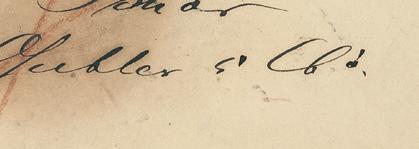
Kupiec-Weglinski, J.W. (2021), The History of Airmail in Poland and Its Contribution to Airmail Services of Europe (1914-1939), Collectors Club of Chicago, XXXVII plus 385 pages.
Muller, F. (1950), Catalogue des Aérogrammes du Monde Entier, Paris, 499 pages.
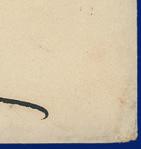

Rouss, H. (2011), “A Study of Early Swiss Airmail: A Comprehensive Supplement. The Swiss Airmail Stamp 30 Rp (F1) with red overprint,” TELL: 37, pp. 1-16.
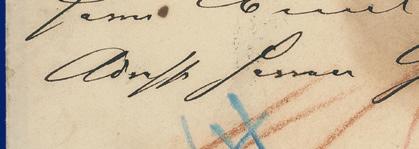
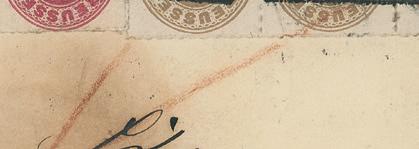


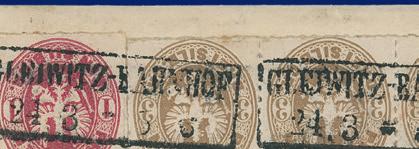

Zbierski, M. (2004), Polskie Taryfy Pocztowe 1918-1939, Zbior Tabel i Dokumentow / Polnische Postgeburhen 1918-1939, Sammlung von Tabellen und Dokumenten / Polish Postal Rates 1918-1939, A Compilation of Tables and Documents, Poznan, 561 pages.
www.collectorsclub.org


102
March-April 2022
SELLSCHOPP AUKTIONEN Consignments are always welcome! After two successful Sellschopp auctions we are preparing our 3rd auction for June 2022. Now is the perfect time to sell. Call or mail directly and expect a tailor made service for your collection. Consignments for our 3rd auction are always welcome! Wilhelm Sellschopp Auktionen GmbH • Neuer Wall 10 • 20354 Hamburg • Germany Phone: +49 40 593 623 290 • e-mail: info@sellschopp-auktionen.de • www.sellschopp-auktionen.de Unique franking from Prussia to Romania. Starting price: 6.000 EUR • Hammerprice: 12.500 EUR Don’t forget! Our library is a great member resource! Online CCNY Library information is available www.collectorsclub.org/the-collectors-club-library/ CCP22.marchapr.indd 102 3/11/2022 11:00:57 AM




































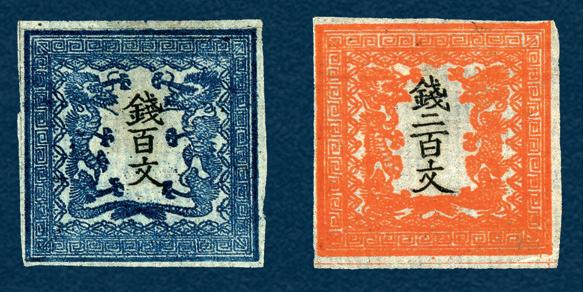



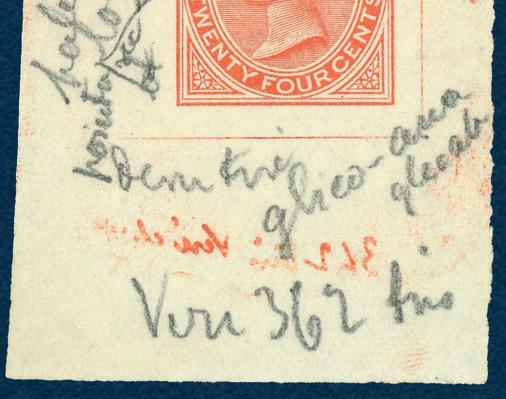

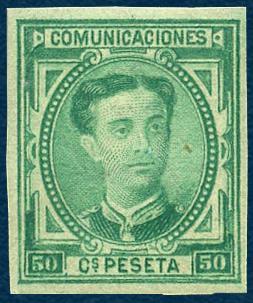
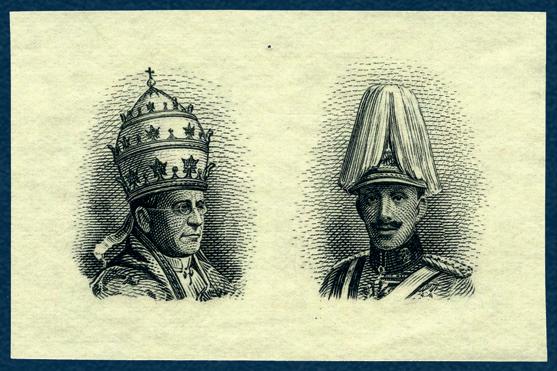
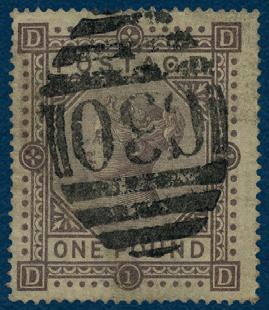

103 Volume 101, Number 2 Collectors Club Philatelist Stanley Gibbons Auctions Stamps and Postal History of the World March 30th - 31st auctions.stanleygibbons.com WC2R 0LX The next sale to be conducted by Stanley Gibbons Auctions will be “Stamps and Postal History of the World” and will take place over the 30th & 31st March Check our website and social media for further information & lot previews 020 7836 8444 auctions@stanleygibbons.com AUCTIONS @StanleyGibbons /StanleyGibbonsGroup @StanleyGibbons Postal History - March 30 31.indd 1 02/02/2022 15:10:51 CCP22.marchapr.indd 103 3/11/2022 11:00:58 AM
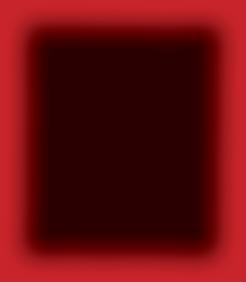


























As the oldest stamp auction house in Switzerland, situated in the international nancial centre of Zürich, we at Corinphila Auctions really know the market. The most specialised philatelic knowledge, fastidious presentation and an international customer base with strong purchasing power guarantee the highest prices. CORINPHILA AUCTIONS – A TRADITION OF SUCCESS CONSIGN NEXT 30 Special All available Latest CORINPHILA – YOUR CONSIGNMENT WILL BE IN THE BEST COMPANY British West Indies – The “BESANÇON” Collection (Part III) to be offered in May/June 2022 ex Philipp von Ferrary (1921) ex Alfred H. Caspary (1957) ex John Lek (1959) ex Chin Chan Cheung (1961) ex D.C. Gray (1962) ex Philipp von Ferrary (1924) ex Arthur Hind (1934) ex Dale-Lichtenstein (1969) ex Arthur ex T. Charlton-Henry ex Arthur ex F.W. Doolittle ex T. Charlton-Henry (1961) ex Bridger & Kay, London (1980) ex Claude Cartier (1977) ex Edward Gilbert (1992) CCP22.marchapr.indd 104 3/11/2022 11:00:58 AM






















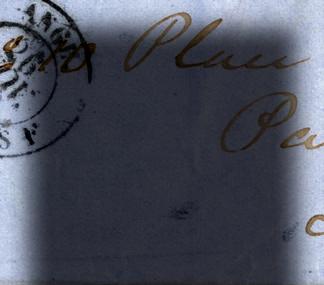



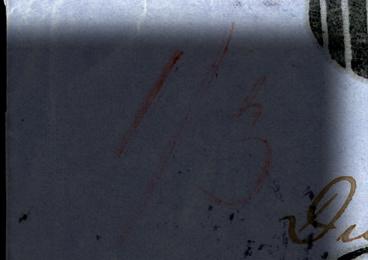
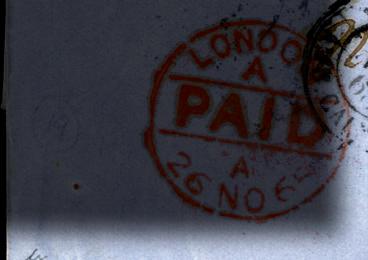


Founded in 1919 CORINPHILA AUKTIONEN AG WIESENSTR 8 · 8032 ZURICH · SWITZERLAND Phone +41-44-3899191 www.corinphila.ch CORINPHILA VEILINGEN BV AMSTELVEEN ∙ NETHERLANDS Phone +31-20-6249740 · www.corinphila.nl nancial international CONSIGN NOW ! NEXT CORINPHILA AUCTION: 30 May - 4 June 2022 Special Viewing All single lots from the upcoming auction will be available for viewing at ‚Helvetia 2022‘ in Lugano. Latest date for consignments: 4 March 2022 CONSIGNMENT COMPANY ex Hodsell Hurlock (1958) ex Conrad Latto (1995) ex Arthur Hind (1934) ex T. Charlton-Henry (1961) ex Arthur Beach (1972) ex F.W. Doolittle (1980) ex Philipp von Ferrary (1922) ex T. Charlton-Henry (1961) ex Lars Amundsen (1967) ex W.A. Frazer (2003) ex Grant Glassco (1969) ex T. Charlton-Henry (1961) ex Cecil Donne ex Alfred Caspary (1957) ex Claude Cartier (1977) ex Collection ‘Abaco’ (2010) CCP22.marchapr.indd 105 3/11/2022 11:00:58 AM
If You Haven’t Discovered Yet: Danish Postal History 1875-1907 Has an Extensive International Usability
Jonas Hällström RDP FRPSL
Newly elected RDP Henrik Mouritsen, from Denmark, presented his lifetime work, his book, Danish Postal History 1875-1907, on May 28, 2019, in connection with the opening of Stockholmia 2019 in Stockholm, Sweden.
In a 30-minute “short” presentation at Stockholmia 2019, Henrik Mouritsen presented his book Danish Postal Rates 1875-1907 and explained that it can be used not only to analyze all postal history in the period from Denmark, but also most postal items from all other UPU-member countries during the period 1875 -1907.

I thought I would give some examples of the very extensive international usability of this book. Obviously, I have noted that – two years later – the book has not yet received the attention among the wide range of collectors who would benefit greatly from it. I am not sure collectors have discovered this book yet, so the aim of this article is to explain its extensive usability. For this example, I have chosen to deal with parcel mail, though the book itself covers all types of mail.
Parcel rates
Rates reflected by parcel cards sent to international destinations are notoriously difficult to analyze and, from most countries, no published literature exists that can help a collector analyze such items. The parcel chapters in this book are extremely detailed and precise, and they contain a lot of information that has not previously been available to collectors. Since UPU rules governed the exchange of almost all parcels weighing up to 5 kg (roughly 11 pounds) from many UPU countries sent before the World War I, this information can be used to analyze these difficult items from many different countries and collecting areas.
106 www.collectorsclub.org March-April 2022
CCP22.marchapr.indd 106 3/11/2022 11:01:00 AM
The fundamental principle for the exchange of UPU postal parcels weighing up to 3 or 5 kg (the weight limit varies over time and country) was that each country involved should get the local equivalent of 50 centimes per parcel. Tables listing the 25 and 50 centimes equivalents in each country’s currency can be found in the UPU postal parcel treaties.

Parcel card No. 1 is for two UPU postal parcels weighing 5 kg each, sent from Bavaria to Switzerland on Oct. 14, 1881. The German currency equivalent of 50 centimes was 40 pf. Since two countries and two parcels were involved, the rate was 2 x 2 x 40 pf. = 160 pf. That was easy!

Table C6b.1, from page 945 of Danish Postal History 1875-1907
However, in some cases, analyzing parcel rates becomes a bit more complicated. In addition to the standard rate of 50 centimes per country involved in the transportation of a UPU postal parcel, any country was allowed to charge an
additional 25 centimes for each parcel that was either sent from or delivered in the given country. This additional charge was optional and many countries, including Denmark and Germany, did not charge this fee. However, a few countries with large expanses of rural areas to which parcel transportation was rather expensive, received permission to charge an even higher delivery/posting surcharge.
One country allowed to assess a high delivery charge was Russia, which, at the time, included Finland. Parcel card No. 2 wonderfully shows the effect of this surcharge. The UPU postal parcel was sent from Denmark to Russia via
107
Volume 101, Number 2 Collectors Club Philatelist
CCP22.marchapr.indd 107 3/11/2022 11:01:02 AM
Parcel card No. 1. Illustration from Heinrich Köhler Auction No. 376, Lot 7187.
Table C6b.3. from page 953 of the book, Danish Postal History 1875-1907
Germany. Because three countries were involved, the rate was 50 centimes to Denmark, Germany and Russia, plus the special 75 centimes delivery surcharge to Russia, 225 centimes = 162 øre in total.
www.collectorsclub.org

108
March-April 2022
Visit your club’s website: www.collectorsclub.org It’s a wealth of great information! CCP22.marchapr.indd 108 3/11/2022 11:01:02 AM
Parcel card No. 2. Illustration and legend is from page 954 of the book Danish Postal History 1875-1907 Parcel card for a postal parcel weighing 1.10 pounds = 0.550 kg sent to Helsinki in Finland (Finland was a part of the Russian postal region at the time), via Germany and Russia Jan. 15, 1902. This parcel card is an example where an extraordinarily high delivery surcharge was added to the normal 50 centimes = 36 øre rate to each country involved in the transportation of the parcel from the sender to the receiver (as shown below).
Danish postage share 50 centimes = 36 øre
German postage share 50 centimes = 36 øre
Russian postage share 50 centimes = 36 øre
Specially granted Russian delivery surcharge 75 centimes = 54 øre
Total rate 225 centimes = 162 øre
The rate was 162 øre for parcels weighing 0-5 kg sent to Finland via Germany and Russia from Aug. 1, 1898, to Aug. 2, 1914. Notice also the 4 “syltetøjsetiketter” [jam jar labels] each marked with the value “5.” These jam jar labels are almost certainly fee stamp forerunners (see chapter D4), which functioned as receipts for the payment of four fee units of 5 øre, for instance, for delivery of wax to seal the parcel, filling out the parcel letter and/or similar services (see table C6g.1).

Now, let’s again see the international applicability of the knowledge presented in the book for non-Danish material. Parcel card No. 3 is an equivalent parcel card sent from Germany to Finland. The only difference in the rating is that no 50 centimes share had to be paid to Denmark (note strikethrough).
Danish postage share 50 centimes = 50 c.
German postage share 50 centimes = 50 c. = 40 pf.
Russian postage share 50 centimes = 50 c. = 40 pf.
Specially granted Russian delivery surcharge 75 centimes = 75 c. = 60 pf.
Total rate 175 centimes = 175 c. = 140 pf.
109 Volume 101, Number 2 Collectors Club Philatelist
CCP22.marchapr.indd 109 3/11/2022 11:01:02 AM
Parcel card No. 3. Source: eBay.
Parcel card No. 4 is exactly the same, except that three parcels, instead of one, were sent. Thus, the rate was 3 x 140 pf. = 420 pf. You see, suddenly seemingly difficult-to-analyze items, become easy with Henrik’s internationally groundbreaking book.
Additional services, such as cash on delivery (COD) and declared value (insurance) were also regulated by the UPU, so parcels with these extra services can also be analyzed by using the book. Pages 963-967 can be used to analyze Parcel card No. 5, which is for a parcel weighing 4.950 kg., sent from Switzerland to Denmark on Oct. 17, 1906. The parcel was transported through three countries (Switzerland, Germany and Denmark), and the receiver had to pay 14.55
Parcel card No. 4. Source: www.philaseiten.de.


110 www.collectorsclub.org March-April 2022
CCP22.marchapr.indd 110 3/11/2022 11:01:03 AM
centimes COD on delivery. The UPU rate for COD on UPU postal parcels was 20 centimes per 20 francs from July 1, 1892, through Dec. 31, 1921. Therefore, the rate was 3x50 centimes + 20 centimes = 170 centimes as franked.


I could go on and on, showing parcel cards from various countries where the book can solve parcel rate description problems for your exhibit, but I think you already got the point.
I would like to stress that I could also present numerous examples for any type of UPU governed mail including insured letters, CODs and money orders where the book can be used to analyze non-Danish items. Just as one example, on book pages 853-862 you can read that the rate for international UPU money orders was 25 centimes per 25 francs or part thereof, but a minimum of 50 centimes from April 1, 1879. Translated into German currency, this was 20 pf. per 20 mark, or part thereof, with a minimum 40 pf. Therefore, the international
111 Volume 101, Number 2 Collectors Club Philatelist
Don’t forget! Our library is a great member resource! Online CCNY Library information is available www.collectorsclub.org/the-collectors-club-library/ CCP22.marchapr.indd 111 3/11/2022 11:01:03 AM
Parcel card No. 5. Source: Ebay.
Money order No. 1. Source: Christoph Gärtner Auction 32, Lot 14880.
postal stationery forms for international UPU money orders issued by Württemberg had an imprinted stamp of 40 pf.

Money order No. 1 is a spectacular piece, since it was sent on April 1, 1879, the first day that UPU money orders could be exchanged. It was for a sum of 45.23 mark sent to Amsterdam. Thus, the rate was 60 pf., as franked for a UPU money order of 40.01-60 Mark.
In summary
To sum up, if you collect and exhibit the postal history of any UPU country and/or cover at least part of the 1875-1907 period in your collection or exhibit, you will benefit enormously from the incredible amount of internationally important postal history knowledge presented for the first time ever in the book Danish Postal History 1875-1907. There is a lot of internationally important information you cannot find in any other book.
With this book you will be able to significantly improve philatelic descriptions of your items from a wide range of countries, which, in turn, would almost certainly translate directly into more points in philatelic knowledge and research if you do a competitive exhibit.
Again, the point of this article was to give you some examples of the very extensive international usability of Danish Postal History 1875-1907, by Henrik Mouritsen RDP FRPSL. If you did not already buy the book yourself, at least I have given you a heads-up for further discovery.
112
www.collectorsclub.org March-April 2022
CCP22.marchapr.indd 112 3/11/2022 11:01:03 AM







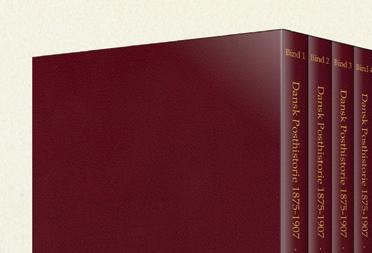



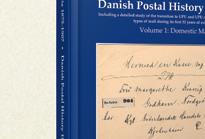




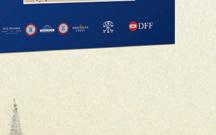












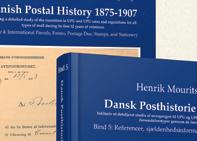






113 Volume 101, Number 2 Collectors Club Philatelist Standard edition • 5 volumes • Hardcover • Bilingual English & Danish • ca. 2000 pages Premium edition • Limited edition • 6 volumes • Hardcover with leatherette • Bilingual English & Danish • Slip case for all six books • ca. 2400 pages Special offer exclusive for the readers of the Collectors Club Philatelist when ordered before April 30, 2022. Free postage to the U.S.! (Shipment in May 2022) Send your order to H.R. Harmer H.R. Harmer · 45 Rockefeller Plaza, 630 Fifth Avenue, Suite 2607, New York, NY 10111, U.S. Phone: +1 (929) 436-2800 Email: info@hrharmer.com Order Now! Dansk Posthistorie 1875-1907 Inklusiv et detaljeret studie af overgangen til UPU og UPU takster og reglementer for alle forsendelsestyper gennem de første 32 år. Bind 1: Indenlandske forsendelser Danish Postal History 1875-1907 Including a detailed study of the transition to UPU and UPU rates and regulations for all types of mail during its first 32 years of existence. Volume 1: Domestic Mail Henrik Mouritsen Dansk Posthistorie 1875-1907 Danish Postal History 1875-1907 Bind 1 Volume 1 US$ 350.US$ 550.- “FEPA Medal 2019 for exceptional philatelic study and research” A full treatment of all UPU rates and regulations for ALL types of mail up to 1907 Essential information for the postal history collector of any UPU country presented using examples from: Danish Postal History 1875-1907 by Henrik Mouritsen RDP CCP22.marchapr.indd 113 3/11/2022 11:01:03 AM
The Beginnings of the Polish Post in Białystok in 1919
by Dr. James Mazepa, RDP
Historical
Background
In August 1914, the German army began its offensive on the Eastern Front. At this time this part of Poland was a province of Imperial Russia, not yet an independent country, and called “Russian Poland.” The German army first advanced on Lódź and, after a fierce battle, occupied the city. On May 12, 1915, the Germans issued a set of Germania stamps overprinted “RUSSISCH POLEN” (Russian Poland). As the Germans advanced further into Poland and occupied Warsaw, a second set of Germania stamps was overprinted “GEN.GOVUV. WARSCHAU” (General Government Warsaw) and issued on July 1, 1916. These two occupation issues were used simultaneously in Poland. Both issues were used post-independence, Nov. 11, 1918, until Dec. 15, 1918, due to the lack of Polish stamps.
As the German army moved further east, a new German administrative district was organized in January 1916 and governed by the Oberbefehlshaber der Gesamten Deutschen Streitkräfte im Osten (Supreme Commander of all German Forces in the East) and a new POSTGEBIET (Postal District) was created. Germania stamps were overprinted “POSTGEBIET OB. OST.” This postal district included all or parts of Lithuania, Estonia, Belarus, Ukraine and Northern Poland. Białystok was included in the “Ober. Ost.” Figure 1 shows a 1917 Białystok registered letter franked with overprinted “Postgebiet Ob. Ost.” stamps and sent to Warsaw.
For the most part, the German army withdrew from the western territories of Poland after independence was declared on Nov. 11, 1918. This was not the case in the eastern territories. An immediate reason was the German’s fear that the Bolsheviks would overrun this area and Poland and thus threaten

114
March-April 2022
www.collectorsclub.org
CCP22.marchapr.indd 114 3/11/2022 11:01:03 AM
Figure 1. Registered letter from Białystok to Warsaw in 1917 with “Ob. Ost.” stamps.
Germany. So the German Tenth Army remained here as a buffer. The German Tenth Army was dissolved on Jan. 6, 1919, and what followed was some difficulty in reaching an agreement with Poland of how the Germans would transit through Poland back to Germany. This transit back to Germany lasted throughout 1919.
In the meantime, there was also conflict between the Polish post office and the German post office, which did not want to accept the establishment of the Polish Post. An agreement was signed with the Germans on Feb. 5, 1919, to recognize the Polish Post. One of the first Polish post offices was set up in the Suwalki railroad station. Here the post office received a supply of Polish stamps and stationery and mail is known from Feb. 8 franked with the Second Warsaw Issue.
The Polish Army entered Białystok on Feb. 19, 1919 (Figure 2). According to the Białystok Diary of April 6, 1919, immediately after the departure of the Germans, the Ministry of the Post and Telegraph in Warsaw decreed that the post office should continue to function at No. 3, Gimnazjalna Street, under the direction of Mr. Goetza. Office hours were to be from 8 a.m. to 1 p.m., and from 5 p.m. to 7 p.m. Supplies of Polish stamps and stationery were sent.
Figure 2. A postcard showing “Polish Army entering Białystok, February 22, 1919” (Incorrect date, should be Feb. 19, 1919).

Introduction of Provisional Postmarks
Circular Canceler
One of the first tasks of the Polish post offices was to create new postal devices to replace the German cancelers. Until new Polish postal devices were made, post offices manufactured temporary, or what are called provisional, cancelers. In the former “Ob. Ost.” sometimes they were of a similar style, such as the circular marks with the city name and Polish Eagle made in Suwalki, Augustów, and
Collectors Club Philatelist
115 Volume 101, Number 2
CCP22.marchapr.indd 115 3/11/2022 11:01:04 AM
Szypliszki. Other offices made their own distinctive cancelers. Such was the case in Białystok. A 25mm circular device was made that included a straight-line town name “BIAłYSTOK,” with ornaments at the top and bottom. The mark is recorded in violet and red. Figure 3 shows a card canceled with this provisional mark in violet, with the postage paid with the First and Second Warsaw issues. The card was written on March 2 and was posted on March 3, 1919. This maybe the earliestrecorded use of Polish stamps in Białystok. Figure 4 shows a postal card written March 31 and franked with a 15 fenig first government issue, canceled in red. These cards confirm the early availability of the First and Second Warsaw Issues and the first government issue in the Białystok post office. They also confirm the then-current postal rates, in this case the 15 fenig postcard rate, were observed.

Figure 3. Violet circular provisional canceler tying the First and Second Warsaw Issues on March 3, 1919 (coll. Auleytner).

Figure 4. Red provisional canceler on 15 fen. government issue (coll. Auleytner).
116 www.collectorsclub.org March-April 2022
CCP22.marchapr.indd 116 3/11/2022 11:01:04 AM

117 Volume 101, Number 2 Collectors Club Philatelist CCP22.marchapr.indd 117 3/11/2022 11:01:06 AM
Figure 5. Second Warsaw Issue with first German occupation issue.
Figure 5 has the interesting combination of the Second Warsaw 10 fenig and an obsolete 5 fenig first German occupation issue, the Germania overprinted “RUSSISCH POLEN.” Unfortunately, the card is not dated. The only reasonable explanation is that the stamp was carried to Białystok and applied there by the sender.


The Straight-line “BIALYSTOK” Canceler
There is no reference in the Polish literature of a 35mm straight line “BIALYSTOK” in black. The first example I had seen was on a piece of a postal form where it canceled two 50 fenig “Ob. Ost.” stamps (Figure 6). A second example, again on piece,

Figure 6. BIALYSTOK straight line tying 50 fenig Ob. Ost. stamps.
Figure 7. BIALYSTOK straight line tying Warsaw issue and first government issue.
ties a First Warsaw 10 fenig and a15 fenig government issue (Figure 7). Unfortunately, neither piece is dated. At first I thought these were philatelicly contrived, but then I acquired a postcard with this mark canceling 5 and 10 fenig First Warsaw issues to Złoczow, thus confirming this as a provisional canceler used at the post office (Figure 8). Again, unfortunately, the card is not dated.
118
March-April 2022
www.collectorsclub.org
CCP22.marchapr.indd 118 3/11/2022 11:01:07 AM
Figure 8. Postcard with straight-line BIAŁYSTOK to Złoczow.
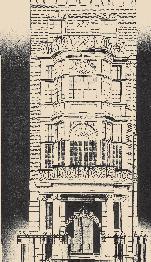
However, further investigation confirmed that when the “Ob. Ost.” was created in January 1916, the 21 post offices that were established in the “Ob. Ost.” also included a telegraph office. Each telegraph office had its own distinctive straight-line canceler (except for Tuckum). This straight-line BIALYSTOK canceler was the one used by the telegraph office at the Białystok post office. Examples of this canceler used during the German occupation and canceling non-overprinted German stamps on a partial telegraph form is shown in Figure 9. The Germans closed the post office in Białystok on Dec. 22, 1918, and the telegraph office on Dec. 17. As noted earlier, the Polish army entered Białystok on Feb. 19, after the Germans departed. When the Polish army took over the post office, it is reasonable to assume personnel continued to use whatever postal devices they could find, including the straight-line Białystok canceler.
Another postcard, shown in Figure 10, is known with this mark and is franked with a 10 fenig First Warsaw issue and a 5 fenig Second Warsaw issue. It has a manuscript date June 12, 1919, a very late use.

www.collectorsclub.org

119 Volume 101, Number 2 Collectors Club Philatelist
Figure 9. BIALYSTOK straight-line canceler , tying German stamps to telegraph form.
CCP22.marchapr.indd 119 3/11/2022 11:01:07 AM
Keep up to date with what’s happening in your club:
Figure 10. BIAŁYSTOK straight-line canceler, late use, June 12, 1919.
Figure 11. Białystok double-circle postmark June 22, 1919, to Austria.

Eventually, Polish post offices began to use standardized double-circle postmarks. In Białystok this postmark was probably introduced some time in February 1919 and is known in black and violet. Figure 11 shows such a postmark on a letter tying a pair of the First Warsaw issue and a pair of the first government issue to Austria. The letter pays the Feb. 25, 1919, 50 fenig increased rate to foreign countries. In addition, the letter has a Warsaw censor cachet.
Additions or corrections are welcome. I want to thank Prof. Julian Auleytner for his assistance in preparing this article, especially for his information from the Białystok Diary.

120 www.collectorsclub.org March-April 2022
CCP22.marchapr.indd 120 3/11/2022 11:01:07 AM
•
• Non-binding
•
• Excellent consignment conditions, free of any additional costs (‘flat fee all-inclusive’)
• Very strong international client network (over 179,000 potential clients all over the world)
• Shipments free of charge as a parcel with DHL or Fedex
•
52nd AUCTION THE AFTER-SALE HAS STARTED! All unsold lots are available until 25 April 2022!
53rd AUCTION 20 - 24 JUNE 2022 Philately, Banknotes & Coins 54th AUCTION 11 OCTOBER 2022 Banknotes & Coins 17 - 21 OCTOBER 2022 Philately CLOSING DATE FOR CONSIGNMENTS:



121 Volume 101, Number 2 Collectors Club Philatelist GET IN TOUCH WITH US! Tel. +49 (0)7142- 789 400 | info@ auktionen- gaertner.de Auktionshaus Christoph Gärtner GmbH & Co. KG Steinbeisstr. 6+8 │ 74321 Bietigheim-Bissingen, Germany │ Tel. +49-(0)7142-789400 Fax. +49-(0)7142-789410 │ info@auktionen-gaertner.de │ www.auktionen-gaertner.de In philately you can discover something new every day ... www.cg-collectors-world.de follow us FULL SERVICE: Are there any images missing in our online catalogue for lots that interest you? No problem – we will gladly send you additional scans, photos or videos: scananfragen@auktionen-gaertner.de
OUR AUCTIONS –YOUR CHANCE! Direct sale for cash or consignment to our auctions –THE CHOICE IS YOURS! CONSIGN OR SELL NOW! All benefits at a glance
Single lots 8 weeks and collection lots 7 weeks before auction
auctions 3 times a year
International
and confidential consultations from our experts, free valuation
and reliable handling
Fast
CCP22.marchapr.indd 121 3/11/2022 11:01:07 AM
For larger consignments free pick-up service at your home
Guidelines for Articles
TEXT. All text for articles should be sent as a simple Word document using the “Normal” style – please don’t attempt to format for the magazine! Bold text, italics and tabs are ok. Text files may be sent as an email attachment or submitted via CD. Please, do not embed illustrations in your text document! Show the preferred location if you wish (or send a separate PDF showing your preference), but leave actual illustrations out. Send them separately. Simple, plain text always works best.
ILLUSTRATIONS. Illustrations are always preferred electronically as scans. Scans must be sized at a minimum of 100% and scanned at 300 dpi as TIF or JPG files for optimal quality. Internet transmittals, such as WeTransfer (preferred) may be used. A typical cover should be at least 1,500 pixels wide.
If you do not have access to a scanner, originals may be sent. We will make scans and return originals immediately by the same method as they are sent to us.
As a last resort, images may be sent to us as high-quality photocopies (hard copies made using a color laser copier and mailed to us). Again, please do not embed images in the text.
DEADLINES. The deadline for the receipt of articles, letters, advertising and news is the first of the month preceding the month of publication. For example, we need everything for a March-April issue by Feb. 1, September-October materials would need to arrive by Aug. 1, and so on. Your attention to – and compliance with – these standards will assure the highest-quality journal we can produce. Thank you for your contribution!
122
www.collectorsclub.org March-April 2022
For Best Results Please Scan Illustrations at 300 dpi CCP22.marchapr.indd 122 3/11/2022 11:01:08 AM

123 Volume 101, Number 2 Collectors Club Philatelist CCP22.marchapr.indd 123 3/11/2022 11:01:09 AM
The Collectors Club
Membership Report
Jan. 12, 2022, Annual Meeting
Class/Year 2020 2021 Difference
Resident: 121 114 -7/-5.8% Non-Resident: 422 479 +57/+13.5% Overseas: 119 123 +4/+3.4%
Total 662 716 +54/+8.2%
New Members [2021]: Resident: 4 Non-Resident: 68 Overseas: 10 Total: 82
Notes: Eight Life and Honorary members are included in annual totals. Overseas membership is considered as “Non-Resident” under our Bylaws. Overseas is broken out to allow differences in postage/shipping be accounted for.
We ask for a moment of silence for the members, past members, and loved ones of members whom we have lost over the past year. May we cherish their memories.
Electronic dues notices and payments have been increasingly successful over the past year. We ask that you keep us abreast of current, valid electronic addresses. Please ensure that your dues have been satisfied to help us avoid additional followup.
Respectfully submitted, Mark E. Banchik Lawrence Hunt Membership Co-Chairs
The Collectors Club Philatelist is an international specialty journal serving the needs of hundreds of collectors worldwide. It serves as the journal of record for the CCNY as well as publishing stimulating and helpful articles for collectors of many levels and specialties. The Collectors Club Philatelist strives to publish accurate philatelic information and serves as a forum for communication among members of The Collectors Club.
124 www.collectorsclub.org March-April 2022
CCP22.marchapr.indd 124 3/11/2022 11:01:09 AM
Outstanding
material creates outstanding results
Consign your collection for our Spring Auction Series. Valuations are free and non-binding.
Lot 30022. Estimate € 20’000, sold for €48’800, including the buyer’s premium.

Lot 40206. Estimate €120’000, sold for €146’400, including the buyer’s premium.
Lot 40266. Estimate € 9’000, sold for €31’320, including the buyer’s premium. Our philatelists




David Feldman International Auctioneers Office 1-800-470-0457
info@davidfeldman.com davidfeldman.com
Lot 51380. Estimate £10’000, sold for £34’160, including the buyer’s premium.
125 Volume
2 Collectors
101, Number
Club Philatelist
50th
ADV - Jan
CCP22.marchapr.indd 125 3/11/2022 11:01:09 AM
are regularly travelling to America. Please contact us to make an appointment.
2022.indd 1 01.02.22 18:46
The Collectors Club
Membership Update: Dec. 20, 2021, through March 1, 2022 We are pleased to welcome the following new and reinstated members.
Approved by the Board of Governors:
Jan. 7, 2022
Non-Resident
Doan, Kirk Hugh Lee’s Summit, Mo. Lupia, John Nicholas Toms River, N.J. Neilson, Dr. Norma Eugene, Ore. Overseas Bister, Michael Leslie Sandy, Bedfordshire, United Kingdom Jan. 25, 2022
Non-Resident Wrona, Richard M. McLean, Va. Overseas Callen, Dr. Brian Bishoptown, Co. Cork, Ireland March 1, 2022 Resident Munoz, Lazaro Basking Ridge, N.J.
Non-Resident Benjamin, Richard C. Venice, Fla.
Congratulations to our new members. A membership certificate will be forwarded to the address on file for each. Please keep us updated as to current physical and email addresses so that we can continue to serve you. Electronic outreach is increasingly important as we continue to expand our offerings. Our website (www.collectorsclub.org) receives ongoing enhancements based on member feedback. Please contact us at info@collectorsclub.org with feedback, comments or questions.
It is with sadness that we note the recent passing of: Stempien, Dr. Martin Resident Member; Past Trustee, Officer, and Governor Bromberg, Dr. Irene Collectors Club Executive Secretary; Wife of member Joel Bromberg
New Applications received:
New applications are posted for 30 days after receipt prior to Board of Governors action. The following applicants have applied for Collectors Club membership from March 2, 2022, onwards:
Non-Resident Lomax, Dr. Richard Sarasota, Fla.
In these uncertain times we are not always aware of events or address changes in a timely manner. Please help by keeping us informed at: info@collectorsclub.org. We recognize the many members who have taken advantage of our online facility for applications and dues/donations payments.
Respectfully submitted, Mark E. Banchik, Membership Co-Chair Lawrence Hunt, Membership Co-Chair
126 www.collectorsclub.org March-April 2022
CCP22.marchapr.indd 126 3/11/2022 11:01:09 AM
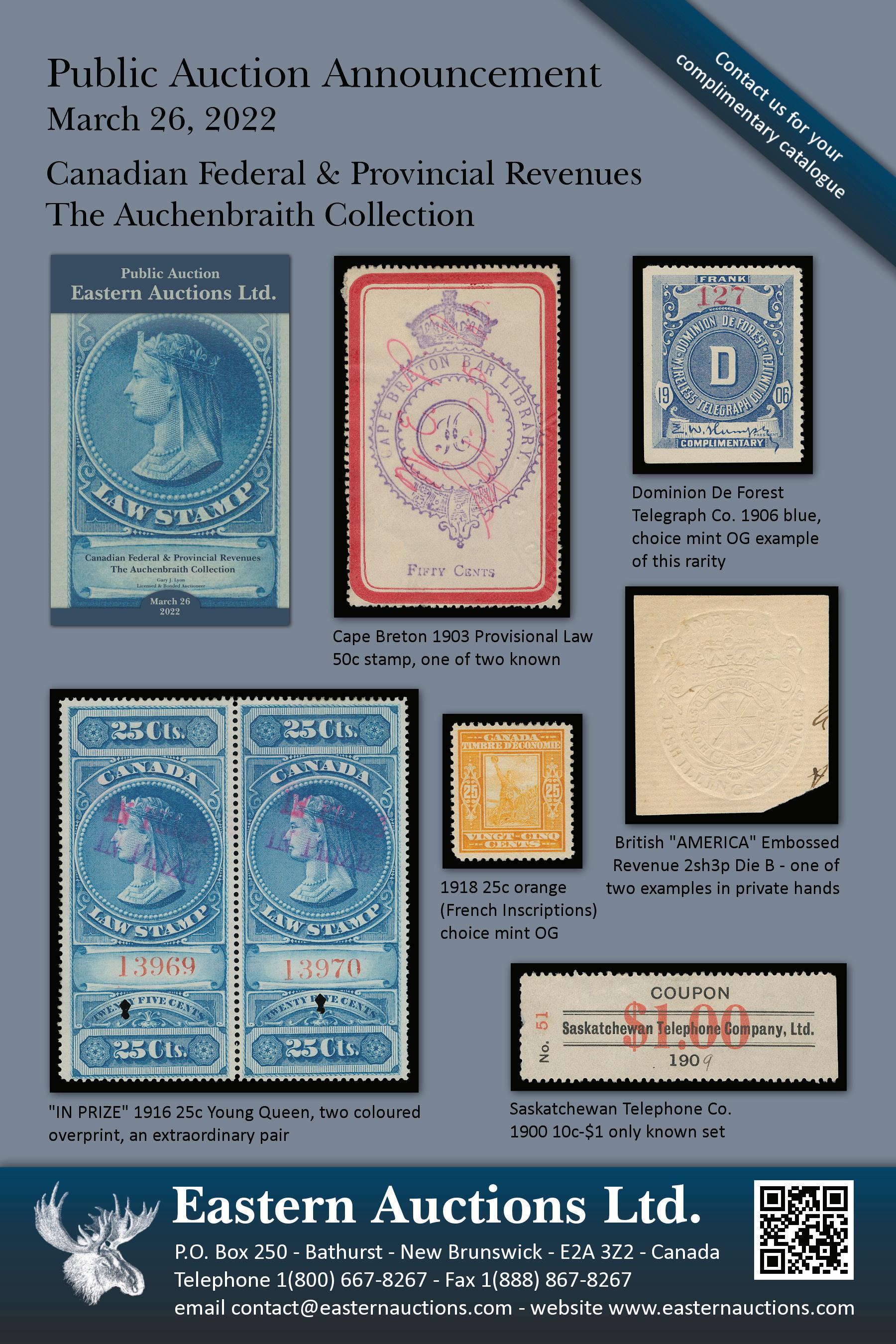
CCP22.marchapr.indd 127 3/11/2022 11:01:10 AM
Index to Advertisers
Page Advertiser 123
Colonial Stamp Company 104-105 Corinphila Auctions Ltd. 127 Eastern Auctions, Ltd. 125 David Feldman 121
Christoph Gärtner GmbH 103
Stanley Gibbons Fr. Inside H.R. Harmer, Inc.
74-75, 113
Heinrich Köhler 69
Le Timbre Classique Inside Back Cvr. Schuyler Rumsey 102 Sellschopp Auctions Back Cover Robert A. Seigel 117 Sparks Auction 128

Teelock Print Group 90 Vidiforms Co., Inc.
The Collectors Club Philatelist is an international specialty journal serving the needs of hundreds of collectors worldwide. It serves as the journal of record for the CCNY as well as publishing stimulating and helpful articles for collectors of many levels and specialties. The Collectors Club Philatelist strives to publish accurate philatelic information and serves as a forum for communication among members of The Collectors Club.
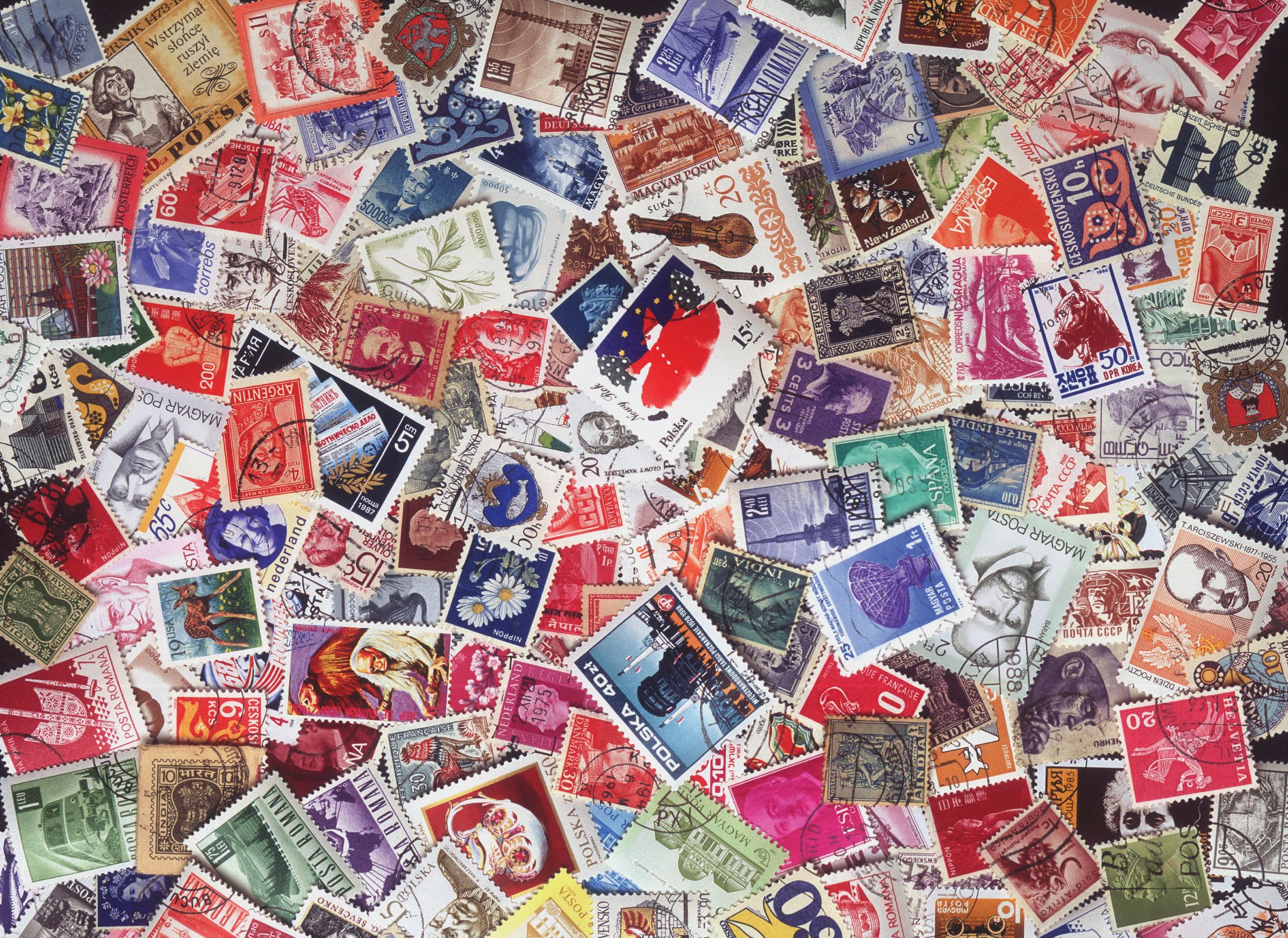
Philatelic Book Printing

Minuteman Press is a printing company that is dedicated to the philatelic community and the growth of the hobby of philately. To honor this commitment Minuteman Press will donate $100 to the American Philatelic Society for every book quote for a job exceeding a quantity of 250 books. So, if you are in need of a book printer who cares about philately and your philatelic printing contact Minuteman Press.
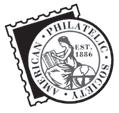
128
March-April 2022
www.collectorsclub.org
CEO & Philatelist steve@mmptoledo.com MEMBER Soft Cover Books | Hard Cover Books | Auction Catalogs | Publications Magazines | Newsletter Printing & Mailing 5847 Secor Road | Toledo, OH 43623 | 419.472.0505 | mmptoledo.com
CCP22.marchapr.indd 128 3/11/2022 11:01:10 AM
The Robert
Dyer
Collection of Newfoundland
To be offered during the Westpex Exhibition in S an Francisco (Apri l 21-24, 2022)
The Robert Dyer Collection of Newfoundland contains several large gold one-frame exhibits that specialized in the surcharge issues, including the 1897 and 1920 Postal Shortages and the Airmail issues. Most of the rarities are present including many items illustrated in Walsh’s Specialized Newfoundland Catalog.

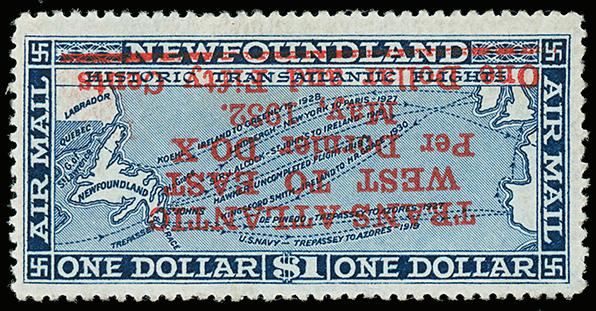


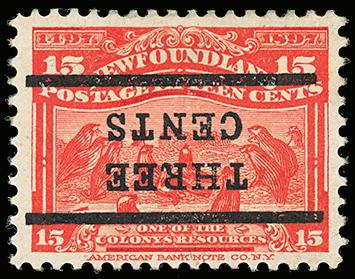



129 Volume
Number 2 Collectors Club Philatelist 415 781 5127 srumsey@rumseyauctions.com visit us at rumseyauctions.com
101,
SCHUYLER J. RUMSEY AUCTIONS I S PROUD T O OFFER:
CCP22.marchapr.indd 129 3/11/2022 11:01:11 AM



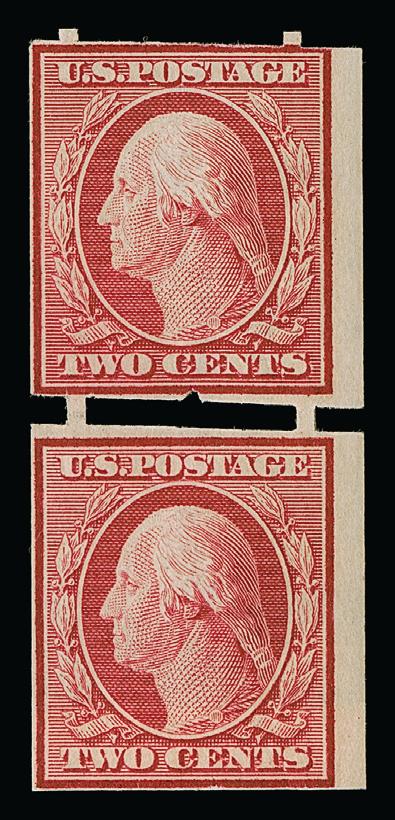


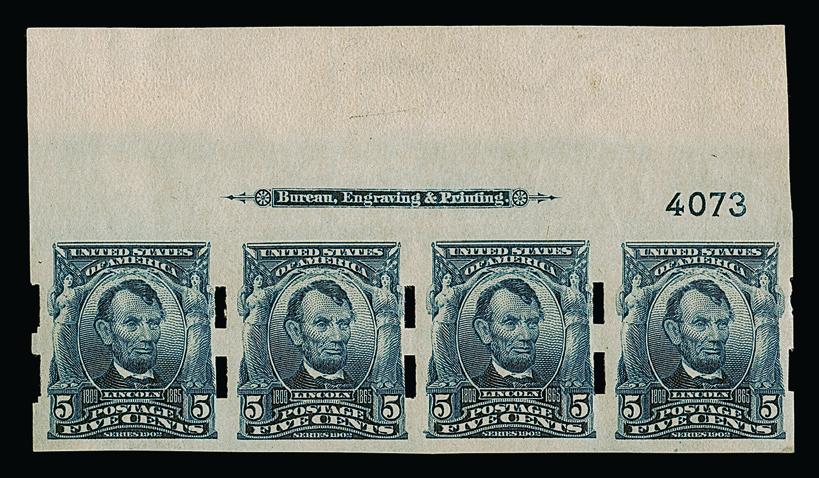



6 WEST 48TH STREET, 9TH FLOOR, NEW YORK, N.Y. 10036 Phone (212) 753-6421 • Email: stamps@siegelauctions.com For buyers or sellers, Siegel Auction Galleries offers unparalleled expertise, a worldwide client base, financial reliability, intelligent marketing, and the best internet resources and search tools. United States Vending and Affixing Machine Perforations The Melvin Getlan Collection
America’s
Part One—April 5, 2022 CCP22.marchapr.indd 130 3/11/2022 11:01:12 AM
ROBERT A. SIEGEL AUCTION GALLERIES, INC.
premier stamp auctioneer since 1930


















































































































































































































































